Editor's note: This text-based course is a transcript of the webinar, Social Emotional Learning: An Occupation-Centered Approach To Self-Regulation, presented by Nicole Quint, Dr.OT, OTR/L.
Learning Outcomes
- After this course, participants will be able to differentiate social-emotional learning from behavioral approaches for self-regulation development in occupational therapy.
- After this course, participants will be able to analyze self-regulation using a top-down, occupation-centered approach to maximize occupational performance in pediatric occupational therapy.
- After this course, participants will be able to apply evidence-based, occupation-centered approaches to facilitate self-regulation through social-emotional learning approaches using case study format.
Introduction
Thanks for being here today to chat about social-emotional learning. There is a course packet that you can access with the QR code, and there's also a live link. It's a Google folder loaded with tools we will review in the course. You can check them out, download them, and tweak them as you see fit.
By the end of this course, you'll be able to tell apart social-emotional learning from behavioral approaches in self-regulation and occupational therapy. We'll analyze self-regulation using a top-down, occupation-centered method for better performance in pediatric occupational therapy. We'll also discuss evidence-based, occupation-centered strategies to boost self-regulation, illustrated through case studies.
Let me share a bit of background on social-emotional learning. I've been digging into this topic and incorporating it into therapy for quite a while now. In 2008, a game-changing article dropped, singing the praises of social-emotional learning. It claimed you could boost grades by 10% and standardized scores by 11%. It seemed like this magical tool that could bring about fantastic changes. It is indeed a great tool, but here's the twist – subsequent studies couldn't replicate those jaw-dropping results, as I delved into this, I want to be clear. It's a tool, not the magic fix. Still, it's a potent tool that works wonders alongside other approaches.
Social-Emotional Learning (SEL)
- CASEL, 2024
- “SEL is the process through which all young people and adults acquire and apply the knowledge, skills, and attitudes to develop healthy identities, manage emotions, achieve personal and collective goals, feel and show empathy for others, establish and maintain supportive relationships, and make responsible and caring decisions.”
- Wallace Foundation, 2022, p. 18
- A process by which individuals learn and apply a set of social, emotional, and related skills, attitudes, behaviors, and values that help direct their thoughts, feelings, and actions in ways that enable them to succeed in school, work, and life
- It’s Developmental!
- Developmental process: Preschool through adulthood
CASEL, the go-to source for social-emotional learning, defines it as the process through which individuals, from young ones to adults, acquire and apply knowledge, skills, and attitudes. It goes beyond mere awareness; it involves having the skills to take action and a perspective that fosters the development of healthy identities, emotional management, goal achievement, empathy, relationship building, and responsible decision-making. It's a multi-faceted concept with several layers.
The Wallace Foundation, another valuable resource in the social-emotional learning realm, describes it as the process by which individuals learn and apply social, emotional, and related skills, attitudes, behaviors, and values. These elements shape thoughts, feelings, and actions, positioning individuals for success in school and life.
While CASEL provides a rich, detailed perspective, delving into identities, emotions, goals, and empathy, there's a certain charm in the simplicity of the Wallace Foundation's definition. Directing thoughts, emotions, and actions toward success – it's a sweet spot, especially when communicating the concept to families and kids. Both definitions emphasize that social-emotional learning is a developmental journey, commencing from birth but gaining significant momentum from preschool through adulthood and beyond.
Emotional Self-Regulation
Emotional self-regulation is a developmental process, and that's part of social-emotional learning.
Year | Emotional Self-Regulation |
1 | Infants try to reduce negative arousal by physical strategies |
2 | Capable of actively utilizing emotional regulation strategies |
3-5 | Able to calm self and start to learn basic feelings, emotions, and management |
6-10 | Understand and apply social rules re: emotions |
11+ | Able to employ more complicated emotional regulation strategies to promote socialization |
Social-emotional learning ties into self-regulation. In the first year of life, infants predominantly resort to physical strategies like crying, kicking, and body movements to reduce negative arousal and convey their stress to others. Moving into the second year, there's a shift to more intentional emotional regulation strategies, such as using a blanket, binky, or a comforting object to calm themselves down.
As we hit the preschool years, children begin to identify basic feelings like sadness, anger, and happiness. Though they might express these emotions physically, they start learning societal norms, understanding that certain behaviors, like kicking or hitting, aren't acceptable. They also become more aware of their own emotions and those of others. This developmental phase aligns with the acquisition of language and various skills.
As kids progress to school age, social rules take center stage. They grasp what adults and peers expect and learn to apply these rules, navigating their emotions accordingly. A notable shift occurs as they become conscious of not displaying certain emotions publicly, aligning with social expectations. Although some children may face delays or challenges in emotional regulation, typical development involves this progression.
Moving beyond middle school, adolescents employ more intricate emotional regulation approaches to navigate the complexities of socialization. This phase involves dealing with more intricate occupations such as dating, part-time jobs, intense school challenges, and assuming leadership roles in groups or clubs. Driving also enters the scene, providing additional opportunities to refine emotional regulation strategies to meet the increasing demands of their environment.
SEL Competencies: CASEL Framework
This is the CASEL Framework in Figure 1.
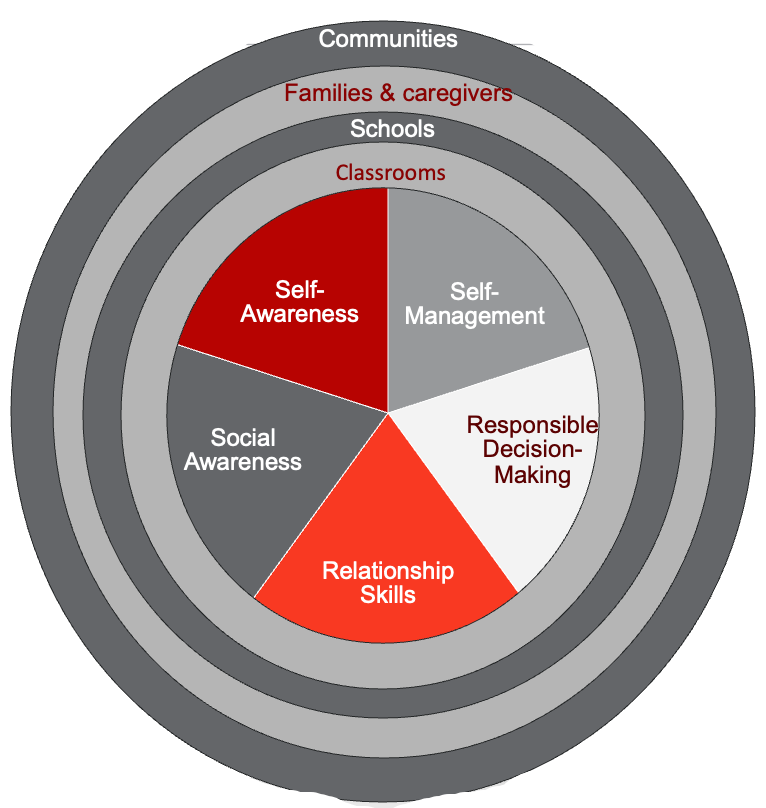
Figure 1. The CASEL Framework.
Let's take a moment to explore the framework provided by this organization, which is deeply rooted in addressing various layers, including the classroom, school, family, caregivers, and communities, primarily focusing on a school-based approach. This framework outlines five key competencies.
The journey begins with the first competency, self-awareness. This involves understanding one's strengths, weaknesses, and emotions. For self-management, individuals delve into recognizing what comes easy, and what's challenging, and understanding emotional reactions in a foundational way.
Now, progressing to the third competency, social awareness, individuals expand their understanding to societal rules and expectations, learning how to navigate and act upon them. It's about broadening awareness beyond oneself.
Next up is the fourth competency, relationship skills. Building and maintaining relationships necessitate a solid foundation in the preceding three competencies. Being a good friend and engaging in reciprocal relationships involves knowing expectations and managing oneself in the process.
The final competency in this developmental progression is responsible decision-making. This skill matures over time, aligning with one's age and developmental stage. The aim is to continually evolve as responsible decision-makers.
It's important to note that these competencies are developmental, meaning they increase in complexity as individuals age and progress in their personal development. The ultimate goal is to foster the ability to make responsible decisions throughout one's journey. Please bear with me; the slide is quite packed with information.
Wallace Framework (2022)
- Short-term Outcomes:
- Aggression/depression
- Social skills/peer relationships
- Academic skills
- Long-term Outcomes:
- Mental health
- Positive behavior
- Academic achievement
- School/ Classroom Context
- Culture & Climate
- Healthy relationships
- Classroom management
- Prosocial norms
- P&P
- Safe & inclusive
- Effective SEL Implementation
- Skills instruction
- Opportunities for skill use
- Coordination across settings
- PD/training
- Culture & Climate
Figure 2 shows the Wallace Framework.

Figure 2. The Wallace Framework.
For a couple of reasons, I find the Wallace Foundation's perspective quite valuable, especially for occupational therapy practitioners. While considering the school context, it broadens the focus to include the teacher's background, social-emotional competence, and teaching skills – areas that resonate with OTs and related service providers. The inner framework addresses social, cognitive, and emotional aspects, while the surrounding areas delve into identity, values, perspectives, and their influence on responsible decision-making.
The expanded view encompasses not just school but also home, the community, and the sociopolitical context. What stands out for OTs is the emphasis on the school classroom context, culture, and climate. Building healthy relationships in the classroom and school, starting with the principal and teachers, is crucial. As OTs, we can play a role in influencing and contributing to the broader environment and culture.
Classroom management becomes a key factor, as teachers must create a conducive learning atmosphere. Pro-social norms, policies, and procedures also play into this dynamic. The culture and climate must be safe and inclusive, which aligns well with OTs' focus on creating supportive environments.
The effective implementation of social-emotional learning is highlighted as our "bread and butter." This involves skills instruction, providing opportunities for skill practice, and coordination across various settings – a prime opportunity for OTs to shine. Professional development and training for teachers and administrators represent another avenue where OTs can contribute significantly, sharing their expertise in social-emotional learning.
Short-term social-emotional learning outcomes include reduced aggression and depression, improved social skills and peer relationships, and enhanced academic skills. These outcomes align with educators' and families' priorities. The long-term outcomes emphasize improved mental health, increased positive behavior, and enhanced academic achievement, influencing students' future success. This evidence-based approach offers ample opportunities for OTs to showcase their knowledge and contribute to the well-being and success of students. As we continue, we'll leverage these insights throughout the presentation.
SEL Evidence-Based Practice
So I wanted to go over a little bit about evidence-based practice and what the research is saying.
Authors | Evidence-Based Practice |
LaBelle, 2023 | SEL programs improve resiliency and addresses mental health for youth; Article uses evidence to guide how therapists incorporate programs |
Howard & Ferrari, 2022 | Differentiates SEL models and relates to career readiness for elementary age |
Mahler et al., 2022 (OT) | Examined effectiveness and feasibility of interceptional program related to emotional regulation, with findings indicating effectiveness. Interoception improvements are potentially related to emotional regulation for an autistic population. |
Cahill, et al., 2020 (OT) | Systematic review of 62 final articles, finding moderate to strong evidence supporting the use of yoga and sports and moderate evidence for play and creative arts for improving mental health, behavioral, and social participation for youth, confirming occupation-focused approaches for social-emotional learning |
Bierman & Sanders, 2021 | Behavioral plans insufficient for self-regulation for children at risk for EBDs. SEL approaches necessary within tiered intervention, tailored individually, to meet needs of children. |
Recent research provides valuable insights into the impact of social-emotional learning (SEL), especially relevant for occupational therapy practitioners. LaBelle's study indicates that SEL programs enhance resilience, which is particularly beneficial for students facing disabilities or socioeconomic challenges. Addressing mental health concerns for youth, especially in the context of the pandemic, SEL emerges as a valuable intervention. Howard and Ferrari differentiate SEL models, emphasizing career readiness for elementary-aged students, which is relevant for OTs involved in school-based interventions.
Mahler et al's OT-specific study explores the effectiveness of an intersectional program on emotional regulation, specifically targeting interoception within an autistic population. Cahill et al's systematic review in occupational therapy consolidates evidence supporting yoga, sports, play, and creative arts for mental health improvement in children. This underscores the efficacy of occupation-focused approaches in SEL interventions.
Bierman and Sanders' 2021 study emphasizes the inadequacy of behavioral plans for self-regulation, particularly for children at risk for emotional behavior disorders. For this population, SEL approaches within tiered interventions are crucial for success in school. It's vital to differentiate between behavioral approaches and SEL to ensure targeted interventions are aligned with each child's unique needs. We'll explore practical applications of SEL in various contexts as we proceed.
SEL and Positive Behavioral Supports & Interventions (PBIS)
Social-emotional learning can play an important role in tier one in the schools. Figure 3 shows an overview.
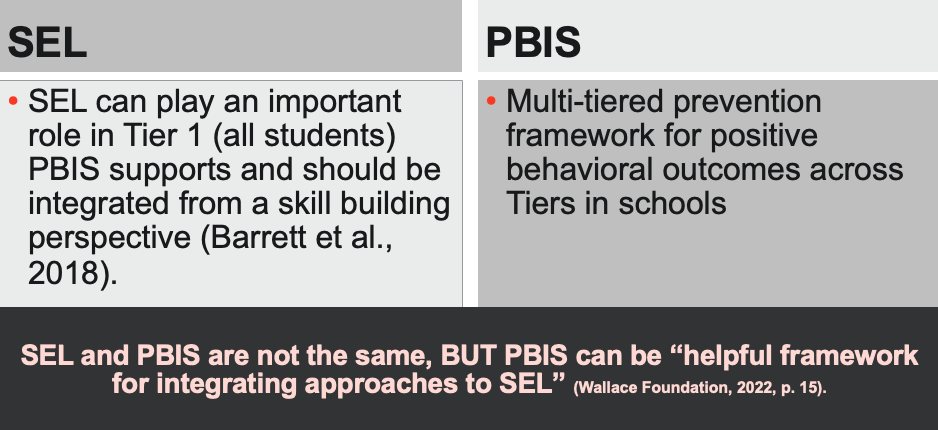
Figure 3. SEL and PBIS overview.
When discussing Tier 1 interventions in public schools under the Individuals with Disabilities Education Act (IDEA), it's crucial to clarify that these are designed for all students, not just those with specific diagnoses or disabilities. Positive Behavioral Interventions and Supports (PBIS) and Social-Emotional Learning (SEL) can be integrated for more successful outcomes, but it's important to understand they are distinct concepts.
SEL teaches students social and emotional management, awareness, and social norms. It's a comprehensive approach that benefits all students, fostering skills for navigating various social and emotional aspects of life.
PBIS, on the other hand, is a multi-tiered prevention framework designed to promote positive behavioral outcomes. While it can be implemented across all tiers, it is typically geared towards students with specific behavioral challenges. PBIS is not exclusively for individual or small group interventions but extends to benefit all students, focusing on preventing and addressing challenging behaviors.
The key is to recognize that while Tier 1 interventions in PBIS are specifically for students with behavioral challenges, incorporating SEL into these strategies can yield enhanced results. Educators can create a more comprehensive and effective approach by intertwining SEL with PBIS. The Wallace Foundation offers valuable resources in this regard.
Understanding the difference between SEL and PBIS is essential for educators and therapists alike, ensuring that interventions are tailored to the diverse needs of students within the Tier 1 framework.
Emotional Intelligence/SEL Vs. Behavioral Approaches
- EI/SEL
- Seeks to build emotional competence through skill building and awareness
- Short-term benefits include decreased externalizing behaviors
- Long-term outcomes are more positive behaviors and improved mental health
- EI stronger predictor of grades than standardized test scores
- Regulating academic emotions
- Building social relationships at school
- Academic content overlaps with EI
- Behavioral
- Behavioral approaches seek to reduce behavioral episodes through functional behavior analysis processes and data collection.
- Short-term benefits can be reduced behavior incidences.
- The long-term benefit is the elimination of behaviors.
Looking at social-emotional learning, it's essential to link it with the concept of emotional intelligence, as the ultimate goal is to nurture emotional competence through skill-building and awareness. The emphasis is on learning and practicing these skills. The short-term benefits of SEL include a reduction in externalizing behaviors. It's important to note that the goal is not to eliminate behavior but to achieve this reduction through enhanced skills and emotional awareness. The long-term outcomes encompass an increase in positive behaviors and an improvement in mental health, marking a significant impact on an individual's overall well-being.
Moreover, emotional intelligence proves to be a robust predictor of academic success, surpassing standardized test scores. By regulating emotions in the academic setting, individuals are more likely to perform better. This not only influences academic achievement but also contributes to building social relationships within the challenging school environment. The intertwining of academic content with emotional intelligence creates a conducive learning environment, fostering the growth of emotionally intelligent individuals from a young age.
Contrasting with behavioral approaches, which aim to reduce behavioral episodes through functional behavioral analysis and data collection, the short-term benefits include a reduction in behavioral incidents. The long-term goal is the elimination of unwanted or disruptive behaviors. While behavioral approaches involve the introduction of replacement behaviors for a more positive outcome, the process differs significantly from SEL.
Addressing a comment on the challenges students face, especially the risk of suspension or exclusion, the integration of behavioral strategies with social-emotional approaches can be highly effective. Combining these approaches facilitates the promotion of self-regulation, offering a more comprehensive and supportive framework for students facing behavioral challenges. The synergy between behavioral and social-emotional strategies becomes a powerful tool in fostering positive student outcomes.
Self-Control & Emotional Regulation: Working Together to Promote S-R
- Social awareness as competency
- Inform responsible decision-making
- Can use values and identity to shape
- Key for SEL development: SCAFFOLDING
(Park, 2016; Slovak et al., 2016; Park et al., 2020)
Along with self-control and emotional regulation, we've now got this bigger concept of being able to regulate yourself (Figure 4).
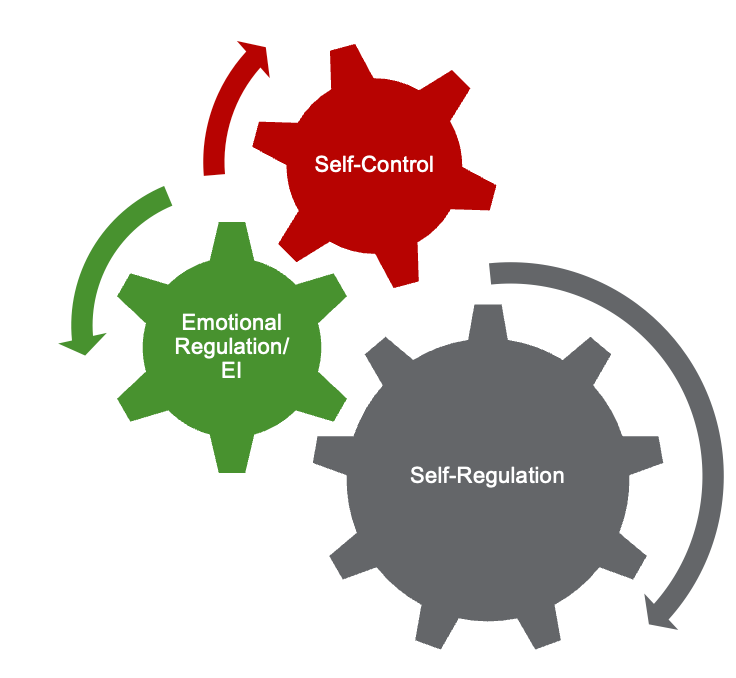
Figure 4. Graphic of self-control, EI, and self-regulation and how they interact.
Social awareness and competence are essential aspects of social-emotional learning. The ability to make responsible decisions and be guided toward that is at the core of SEL, and individuals can learn and develop these skills. What makes SEL effective is its potential for individualization, leveraging values and personal identity to shape the learning process. This aligns well with occupational therapy's client-centered and family-centered approaches, emphasizing the personal meaning and value that occupations hold for individuals.
Occupational therapists naturally integrate personal contexts of value and identity into their practice, making them adept at tailoring interventions for individuals. This personalized approach, tying in the meaningful aspects of a person's life, contributes to a stronger and more impactful outcome. Occupational therapists excel in modifying information to suit individual learning styles and skill levels, enhancing the effectiveness of SEL interventions.
Scaffolding, a technique familiar to occupational therapists, is a key component in the evidence-based practice of social-emotional learning. It involves providing the necessary support and guidance as individuals acquire new skills, gradually fading this support as they become more proficient. This approach aligns seamlessly with occupational therapy principles, making the integration of SEL into therapeutic practices a natural and effective process.
Three Types of Control: Self-Regulation
- Impulse Control
- Stop and think before acting
- interferes with academics, social, and getting in trouble at school
- External feedback, arousal levels (sensory and cognitive), RP
- Emotional Control
- Ability to manage feelings (negative and positive)
- Give up, cannot calm to finish task, overreact, co-regulate others
- Skill building, arousal, repeated practice (RP)
- Movement Control
- Ability to manage how/when body moves
- Restless/fidgety/overly active, difficulty sitting still/staying in line, walk around during class, bump into people
- Arousal through sensory approaches, RP
In the broader context of self-regulation, three significant types of control come into play. Impulse control, associated with executive function, involves inhibiting immediate reactions and encouraging individuals to stop and think before acting. This is crucial for social awareness, preventing interference with academic and social aspects. Children typically develop a firmer grasp of impulse control around four years of age. However, children with neurobehavioral disabilities might lag in executive function development, necessitating targeted interventions. Addressing impulse control involves external feedback, regulating arousal levels, and repeated practice.
Emotional control is a key aspect where social-emotional learning (SEL) plays a pivotal role. This dimension involves managing both negative and positive emotions. Children may struggle with handling positive emotions, and it's essential to consider diverse expressions, such as those observed in individuals with autism. Consequences of poor emotional control can range from giving up on tasks to co-regulating others in an undesirable manner. SEL interventions for emotional control include skill-building, arousal regulation, and continuous practice in understanding and managing emotions.
Movement control pertains to managing body movements effectively. This aspect often manifests as restlessness, fidgetiness, or bumping into others. While there's a sensory component, establishing rules for appropriate movement is crucial. Recognizing impulse control, emotional control, and movement control as distinct components allows for targeted interventions, making the complex concept of self-regulation more manageable. Social-emotional learning, focusing on emotional control, can also influence and contribute to impulse control.
By breaking down self-regulation into these components, therapists can tailor interventions to address specific challenges, providing a more effective and targeted approach to fostering self-regulation skills in individuals.
Self-Regulation (Robson, Allen, & Howard, 2020)
- Preschool
- Social competency
- School engagement
- Academic performance
- NEG: int/ext probs, peer victimization (at age 8)
- Early School Years
- Academic achievement (math and literacy)
- NEG: externalizing problems, obesity, smoking/ drug use (at age 13)
- S-R in Childhood
- Can predict achievement, interpersonal behaviors, mental health, healthy living later in life
- Task-based assessments and teacher-report assessments stronger associations than parent-report
This article underscores the critical importance of addressing social-emotional learning (SEL) and self-regulation in early childhood. Preschool interventions focusing on social competency, school engagement, and academic performance through SEL approaches have shown positive outcomes. However, when SEL competencies are lacking, there's a concerning trend of increased internalized and externalized problems, along with peer victimization by age eight.
The early school years present a crucial window for intervention, as acquiring self-regulation skills correlates strongly with academic achievement, particularly in math and literacy. Neglecting these skills can lead to negative consequences around age 13, including obesity, smoking, drug use, and escalated externalizing problems.
The key takeaway is that childhood self-regulation is a predictor for various aspects of personal and interpersonal behaviors, academic achievement, mental health, and overall well-being in later life. It's emphasized that task-based assessments and teacher reports are more strongly associated with SEL outcomes than parent reports. This insight highlights the importance of considering multiple perspectives, particularly from teachers when assessing social-emotional learning, especially if the child is seen in clinical or home settings.
SEL and Occupational Therapy
- AOTA School Mental Health Toolkit: https://www.aota.org/~/media/Corporate/Files/Practice/Children/SchoolMHToolkit/Social-and-Emotional-Learning-Info-Sheet.pdf
- Levels of intervention
- Occupational performance:
- Social participation
- ADLs
- Education
- Work
- Play & Leisure
- IADLs
Introducing sensory tools into classrooms without causing distraction can be a bit of a balancing act, but I've found some effective approaches. One strategy is to adopt a Tier 1 approach, making these tools accessible to everyone in the class. This way, it becomes a normalized part of the environment rather than something unique to a specific student.
When not everyone can have direct access, I try to keep it low-key. If a particular tool draws too much attention, I turn it into a shared experience. For example, if a student has a stress ball as a sensory strategy, I might bring in an extra one to pass around, letting other kids feel and understand it. It helps demystify these tools and makes them less distracting.
In the past, when flexible seating or sensory tools were introduced, concerns about chaos often arose. However, I've observed that the initial interest lasts for about 10 minutes, and then it becomes just another part of the classroom. Students get used to it, and it stops being a distraction.
Collaborating with teachers is crucial in these situations. I find it helpful to establish open communication, explain the benefits, and negotiate solutions that work for both the student and the class. It's about creating an inclusive environment where sensory tools are seen as aids rather than distractions.
Self-regulation
| Dynamic process of determining a desired goal and taking action to move toward it while monitoring progress along the way |
Self-control
| Process of advancing one goal over a second goal when the two come into conflict |
Cognitive Control
| Flexible allocation of attention in the service of goal-directed behavior in the face of more habitual or immediately compelling behaviors |
Impulsivity
| Tendency to act on immediate urges, either before thinking of potential negative consequences or despite consideration of likely negative consequences |
Conscientiousness | Following socially prescribed norms for impulse control, be goal directed, plan, and delay gratification |
(Inzlicht, et al., 2021)
Returning to the intricate concept of self-regulation, I find it to be a dynamic process, a nuanced interplay of determining desired goals, taking purposeful action, and vigilantly monitoring progress. It may seem intricate, but breaking down its components sheds light on its complexity.
Self-control involves prioritizing one goal over another when faced with conflicting objectives. Consider situations where the desire to move around clashes with the necessity to complete an assignment; selecting the priority goal becomes the challenge. On the other hand, cognitive control demands sustaining attention in the pursuit of goal-directed behavior, even in the face of more captivating stimuli. It requires internal dialogue to stay focused despite potential distractions, such as a peer's intriguing squeezy ball.
Conversely, impulsivity denotes succumbing to immediate urges, often without contemplating consequences. It's that moment where actions precede thoughtful consideration, or even if the potential negative outcomes are recognized, the action still occurs. Conscientiousness is a fascinating facet, emphasizing adherence to socially prescribed norms for impulse control. It revolves around being goal-directed, having a plan, and mastering the ability to delay gratification—an aspect deeply rooted in the social-emotional domain.
These layers, when viewed collectively, provide a holistic understanding of self-regulation. While social-emotional learning undeniably plays a pivotal role in this intricate puzzle, it doesn't operate in isolation. It intertwines with sensory elements, encompassing arousal, bodily responses, and impulsivity—a domain where cognitive-behavioral approaches and sensory strategies find their place. The synergy between these facets forms a comprehensive framework for addressing self-regulation.
Here is a story about the introduction of ball chairs into a classroom. Supplying three extra chairs allowed all students to experience them during a session. Several years later, a substitute teacher attempted prohibiting a student from using the ball chair. However, something remarkable unfolded as peers rallied around, advocating for the student's need for the ball chair. This narrative poignantly exemplifies the power of educating children about differences and individual needs. It showcases the positive outcomes of social-emotional learning, where understanding, empathy, and advocacy become integral components of a supportive classroom environment. Narratives like these underscore the significance of fostering inclusive spaces where education transcends academics, touching the core of human connection and support—stories that reinforce the importance of uplifting and supportive educational environments.
Top-Down or Bottom-Up Approach
Let's compare a top-down versus a bottoms-up approach, as seen in Figure 5.
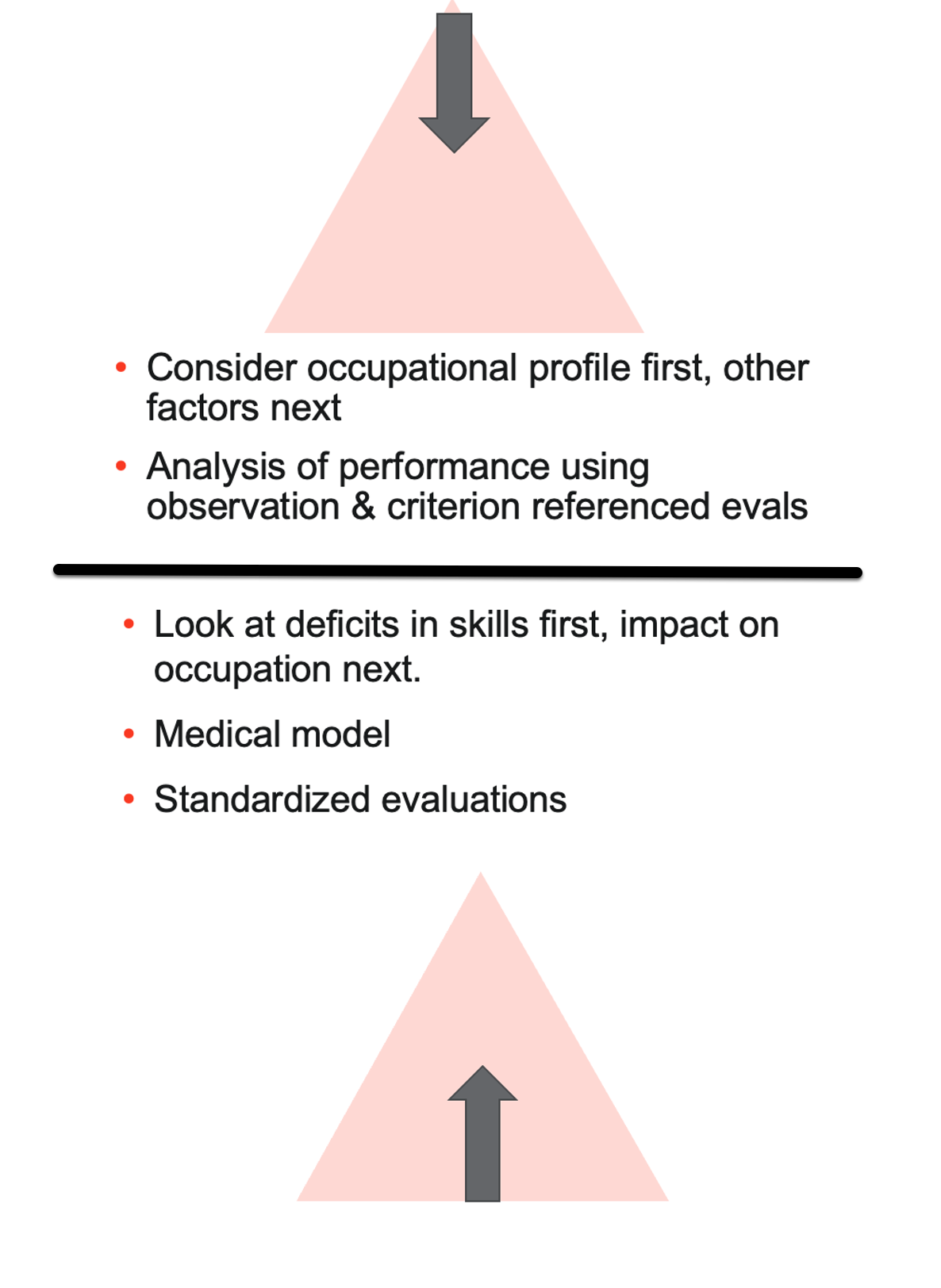
Figure 5. A top-down versus a bottoms-up approach.
The distinction between bottom-up and top-down approaches is crucial in understanding sensory and cognitive perspectives. When I refer to top-down, I prioritize occupation, considering the occupational profile and related factors first. In contrast, the bottom-up approach addresses skill deficits as a starting point, taking a physiological perspective.
In a top-down approach, the emphasis lies on the occupational profile, where we analyze performance through observations and criterion-referenced evaluations. Criterion referencing involves understanding what the child is doing and how they're doing it, focusing on the performance of the activity. It differs significantly from standardized evaluations, which provide a normative value, placing individuals on a bell curve concerning their abilities.
Conversely, the bottom-up approach follows a more medical model, identifying skill deficits before considering their impact on occupation. This method often results in a list of skill deficits, leaving practitioners wondering where to begin and how to formulate effective goals. While standardized evaluations are essential to comprehending deficits and their impact, solely relying on them can prove challenging.
The key lies in integrating both approaches synergistically. By incorporating occupation-based assessments, we gain insights into writing occupation-focused goals and addressing skills within the context of the occupation, ultimately enhancing performance. This nuanced understanding allows for a comprehensive and effective intervention strategy, combining the strengths of both bottom-up and top-down perspectives.
Evaluation Process
- I consider emotional intelligence as a guide.
- CASEL assessment tools index
- CLASS (Classroom Assessment Scoring System)
- Early Childhood Environment Rating Scale
- Feelings About School (FAS)
- SEL Strengths Builder
- SMALSI (School Motivation and Learning Strategies Inventory-WPS)
- SSIS (Social-Emotional Learning Edition-Pearson)
I prefer using emotional intelligence as a guide in my approach. The CASEL five competencies are undoubtedly effective, but emotional intelligence provides a more specific and skill-oriented framework. It breaks down into manageable components: knowing one's emotions, identifying emotions in others, managing personal emotions, handling emotions in response to others, and building relationships. This specificity aligns well with my preference for targeted skill development.
When it comes to assessment tools for social-emotional learning, while I often seek free resources, it's challenging to find comprehensive ones. However, there are paid options that can be highly valuable. Some noteworthy tools include those listed in the CASEL assessment tools index, accessible through this link. These tools offer a range of options, including school-based programs catering to a school community's collective needs. Exploring these resources can aid in making informed choices based on the specific requirements of the context.
Assessment Tools: Person
- Young Children
- Ages & Stages SE-2(S-R, affect, adaptive functioning, compliance, interaction, screen-$$)
- Ages & Stages Toolkit (Free)
- DECA (Devereaux Early Childhood Assessment-2)
- Preschool BERS
- BITSEA (Brief Infant * Toddler SE Assessment---you can access review copy)
- ITSEA (Infant Toddler SE Assessment--you can access review copy)
- Social Emotional Assessment Measure (SEAM): up to preschool
- School Age
- WCSD S&E Competency (short and long form—FREE)
- DESSA (Devereaux Student Strengths Assessment-8 SEL competencies K-8 (also DESSA-Mini-$-$$)
- Panorama SEL-self-report of 9 competencies (validity only with formative use)
- BERS (Behavioral and Emotional Rating Scale (strengths-based-$$$)
- SEARS (Social-Emotional Assets and Resilience Scale- K-12-$$$$)
- SEL Benchmark
- Free (up to 30 students)-gives score and indicates what Tier of interventions
- BASC-2 (Behavior Assessment System for Children, 2nd-Pk-12-
I've compiled a selection of tools for social-emotional learning assessments, making them easy for individual clients or broader school-aged applications. For young children, I've provided accessible links to specific tools, ensuring a seamless learning experience. The Panorama tool, with its nine competencies, offers a detailed approach. Meanwhile, the WCSD social-emotional tool, including short and long forms, stands out for being free, making it a valuable resource.
Moving into school-aged assessments, the DESSA, noted with dollar signs for cost estimation, is a tried-and-tested tool. The BITSEA and ITSEA are excellent choices for young kids, and you can request review copies, offering flexibility in access. For broader K-12 applications, the BERS and SEARS, though investments, provide comprehensive insights, each with its approximate cost range. The SEL benchmark, accommodating up to 30 students for free, is an attractive option, especially considering its tier-based intervention information. Lastly, the Behavior Assessment for Children rounds out the collection, contributing to a well-rounded set of assessment tools.
Assessment Tool Resources
Resource/ Link | What |
Interactive database tool-plug in needs and it will find you tools | |
BITSEA and ITSEA tools with review copy | |
Preschool developmental information and videos-great resource for parents and teachers | |
Pearson | Various tools and support |
WPS | Various tools and support |
I've also provided additional resources and programs to enhance your understanding and application of social-emotional learning. Among them is the well-known Zones of Regulation, which I'll delve into shortly. Feel free to explore these materials to further enrich your knowledge and practice in social-emotional learning.
SEL Curriculum/Programs/Training Resources
Resource | Focus |
| Self-esteem for girls programming-expressive arts focus |
Body image/self-esteem campaign 11–14-year-olds | |
Sandy Hook Promise org focused on building empathy skills K-5, 6-12 | |
Anger management workbook | |
Kindle Unlimited | Free SEL picture books |
Books, animations, interactive games, coloring books, stick/paper puppets | |
Implementation guides, consultation resource guide, REP (resilience education program) | |
Resources ranging from wall messages to how to integrate SEL into physical education | |
Search for SEL; activities for SEL building but also has resources on research and breaking down myths of SEL |
I've compiled various resources and programs for you to explore further. Beautiful Me, SAMHSA workbook, Edutopia, understood.org, Every Moment Counts, and Zones of Regulation are some of the valuable tools available. Every Moment Counts is a noteworthy program created by Susan Bazyk in Ohio, led by occupational therapists for mental health in schools. Check out everymomentcounts.org for more details on this phenomenal statewide initiative. Take your time to delve into these resources, and remember, the journey of incorporating social-emotional learning is an ongoing process of learning and application.
Skill Building
- Teaching and learning approach
- Start with exploration, lower-order questions
- Move toward higher-order questions and guided problem-solving
- Visual imagery and anticipatory problem-solving
- Declarative knowledge: preparatory phase (what is known)
- Procedural knowledge: represented implicitly (what they do-through repeated practice)
- KEY: emotional activation associated with stress weakens use of declarative knowledge and strengthens procedural knowledge
Figure 6 shows skill building via a bottom-up approach.
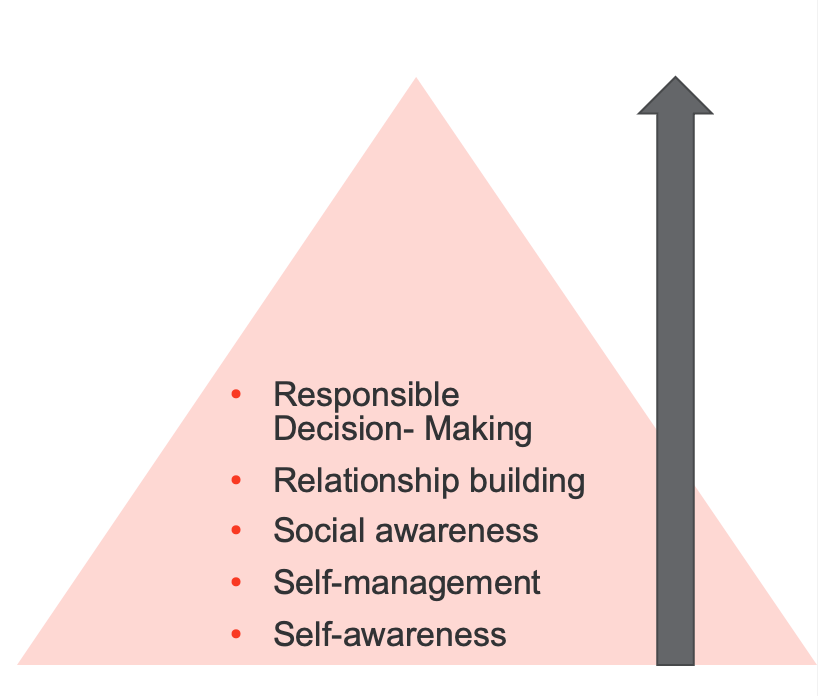
Figure 6. Bottom-up approach.
In our teaching and learning approach for the CASEL five competencies, we explore, allowing children to delve into the concept, complemented by lower-order questions. As we progress, we transition to higher-order questions and guided problem-solving. Visual imagery and anticipatory problem-solving become crucial in this process, adapted to the cognitive and developmental levels of the individuals.
Moving on, we focus on declarative knowledge, evaluating what they know and can articulate. This serves as the preparatory phase. Subsequently, we emphasize procedural knowledge, requiring them to apply their acquired knowledge through repeated practice in real-life scenarios.
It's noteworthy that stress, often associated with emotional activation, tends to diminish the use of declarative knowledge and reinforce procedural knowledge. Therefore, introducing controlled stress during practice is vital for effective learning.
Regarding the question about applicability to adults, absolutely. While using these tools, ensure that the materials and approaches align with the maturity level of adults, avoiding any inadvertent infantilization. Pinterest can be a valuable resource for finding or creating materials tailored for adults in social-emotional learning.
- Scaffolding
- Evidence-based approach as theoretical model for enhancing learning
- First theorized by Vygotsky
- Bridging gap between what the student knows and new knowledge they need to obtain (declarative)
- Teaching method where adults support and guide children to learn concepts at a faster pace than learning organically in situ.
- Hints/cues
- Demonstration/modeling
- Reduces uncertainty, builds confidence
- Reduces reliance on memorization
- Stimulates motivation
- Flexible
(Slovak et al., 2020; Brightwheel, 2024)
In our approach to skill-building through scaffolding, we draw on the evidence-based concept rooted in Vygotsky's theories. Vygotsky emphasized the importance of providing a "just right challenge" and scaffolding – breaking down learning into manageable steps for repeated practice. This process bridges the gap between what the learner already knows (declarative knowledge) and the new knowledge they need to acquire, also in a declarative form. Guiding children through this process accelerates their understanding compared to independent learning.
Guidance takes various forms, including hints, cues, and demonstration modeling. While verbal cues are valuable, they should be complemented with visual aids, reminders, and summarized feedback after practical exercises. Role-playing and demonstrations help reduce uncertainty, boost confidence, and foster a move from declarative to procedural knowledge. It's crucial to diminish reliance on memorization and encourage thinking on their feet.
This teaching approach stimulates motivation and flexibility in learning. As an additional resource, Brightwheel is recommended, providing valuable tools to support these principles of scaffolding and skill-building.
- SCAFFOLDING
- Modeling approaches
- SEL tools such as emotion identification charts
- Worksheets
- Role-play
- Games (Dungeons & Dragons!)
- Kawa model
- Apps, computer games
- Potential occupational avenues
- Creative endeavors (poem, writing, art, etc.)
- Yoga
- Mindfulness
- Drawing
- Journaling
Various methods and tools can be employed in the skill-building approach through scaffolding. These include modeling, emotional identification charts, worksheets, role-playing games (even embracing the resurgence of Dungeons and Dragons), and the Kawa model, which we'll delve into shortly. Additionally, apps, computer games, and various occupational avenues can be explored.
Occupations that tap into creative endeavors, such as writing poetry or stories, engaging in art, practicing yoga, and mindfulness, can serve as effective channels for skill development. Drawing and journaling are also valuable activities in this process.
Transitioning to the top-down approach involves identifying the occupation as the goal. Determine the natural context or setting where the occupation unfolds. At this juncture, engaging in activity analysis, a core skill for occupational therapists, becomes pivotal. This unique ability to deeply break down and understand activities sets OTs apart, forming a crucial part of the top-down approach.
Top-Down Approaches
- Goal: Improve
- Where/Context?
- Activity Analysis
- What can the child do?
- What are the discrepancies?
Our expertise truly shines in occupational analysis and the top-down approach. This method allows us to meticulously examine an individual's capabilities within a specific occupation. By discerning what they can accomplish and identifying areas where challenges arise, we can pinpoint the discrepancies between their current abilities and the desired goal. These gaps become the focal points of our intervention efforts, guiding us to work strategically on the aspects that require improvement.
- ADL, education, play, IADL occupational analysis
- Start with play or preferred occupations
- Analyze from participation or performance
- Address the SEL discrepancy within the occupational analysis
- Assures occupation-centered approach
We can apply this approach to various occupations, whether it's activities of daily living, education, play, instrumental activities of daily living, social participation, or any other area we aim to address. Personally, I find it effective to commence with play or preferred occupations rather than diving straight into challenging tasks like homework or ADLs. Analyzing preferred occupations, where there might be some frustration, provides a more amenable starting point than tackling non-preferred ones.
In our analysis, we consider both participation and performance aspects. Our focus often centers on the performance piece while evaluating whether they're participating in a particular occupation. Simultaneously, we're keen on identifying the social-emotional learning discrepancies that require attention. Figure 7 shows an overview of this.

Figure 7. Graphic of different social-emotional learning approaches.
A comprehensive approach can be applied combining top-down and bottom-up strategies, along with occupation-based interventions like yoga, mindfulness, journaling, creative arts, and games. While the evidence for yoga, mindfulness, and journaling is particularly robust, creative arts and games fall into the moderate evidence category. Integrating these elements creates a powerful and holistic approach, creating a synergistic effect that fosters meaningful change. This combination leverages the strengths of various strategies to address social-emotional learning and enhance overall well-being.
Case Study: PK
- Parker is a 4-year-old in PK (dx with Down Syndrome)-he goes by “PK”
- He loves dinosaurs, Legos, cars, and trucks and playing with trucks on the playground.
- The parents want to be proactive with SEL approaches and have some concerns about his ability to identify emotions and know appropriate contexts for hugging.
- Children with DS have less social emotional delays than in other areas.
- Consistent with many students with DS, he responds to visual learning strategies; reduced auditory instruction, increased time for processing, reduction of slang (literal learner), and needs small steps and repetition.
- Scaffolding strong approach for teaching PK, guiding practice
Meet PK, a delightful four-year-old passionate about dinosaurs, Legos, cars, and trucks. PK has Down syndrome, which often comes with fewer social-emotional delays, making him generally pleasant. However, his parents, eager to be proactive, express concerns about his ability to identify emotions compared to his peers. They specifically wish to address appropriate contexts for actions like hugging. Given his diagnosis, visual learning strategies work exceptionally well with PK, and reducing auditory instruction is crucial. As a typical four-year-old, he benefits from small steps, repetition, and scaffolded guidance. His parents emphasize the hugging scenario, seeking insights into where PK faces challenges—whether at the store, school, or home—so that interventions can be tailored accordingly.
Assessment
- SEAM
- 10 benchmarks
- PK scored well in regulating S-E responses, shows empathy, positive self-image
- Needs: healthy interactions, shares attention, demonstrates independence
- Parental Input
- Want to replace hugs with more socially appropriate gestures
- Wants to increase independence
- Identified PK doesn’t seem aware of feelings and only identifies happy
PK underwent assessment using the SEAM, revealing commendable strengths in regulating social-emotional responses and displaying empathy beyond his age. Notably, he exhibits a positive self-image. However, areas needing attention include fostering healthy interactions, sharing attention, and nurturing independence. Parents desire PK to become more self-reliant and seek alternatives to hugs for safety and social appropriateness. PK's emotional awareness is a focal point, with a noticeable gap in recognizing feelings beyond happiness. Addressing negative emotions represents a key objective for intervention.
Self-Awareness and Emotion
- Self-Awareness/Emotions
- Direct activities, social stories
- Adding feeling faces to environment/ visual supports
- Self-Management
- Direct instruction, Social stories
- Cueing during opportunities
- Monitoring Tools
- Social Awareness
- Direct instruction, Social stories
- Post rules/ consequences
- Peer-mediated
(Katz & Girolametto, 2013; Odom, 2019; van Rhijn et al., 2021)
For PK, addressing self-awareness and emotions is crucial. Direct activities focused on understanding and expressing emotions, combined with the effectiveness of social stories, can serve as foundational tools. Integrating feeling faces into visual supports, such as his schedule, to further support PK's emotional learning creates natural opportunities for emotional check-ins. Layering these concepts gradually and incorporating personal and peer experiences will provide effective scaffolding.
Direct instruction and social stories remain valuable in self-management, accompanied by visual cues for prompt reminders. Monitoring tools represented visually will empower PK to track his self-management progress independently. Moving to social awareness involves instilling societal norms and expectations. Utilizing social stories, posting rules visibly, and implementing age-appropriate consequences contribute to PK's comprehension. Peer-mediated interventions involving role models demonstrating appropriate greetings without hugging add a practical dimension to PK's learning process. Scaffolding strategies tailored to PK's developmental stage will enhance the effectiveness of the intervention.
Social Stories
- PK: Social Stories
- Social Story Topics
- Sense of self
- Feeling competent/“Can do”
- Emotional awareness
- Community participation
- Empathy
- Using good manners
- Sharing
- Scaffolding Opportunities
- Show & Tell
- Visual Aids
- Thermometer/Flip sticks/Puppets
- Think-pair-share
- Question presented
- Few minutes to think
- Pair up learners to share answers
- Social Story Topics
(Brightwheel, 2024)
Expanding on the concept of social stories, various topics like developing a sense of self, emotional awareness, and practicing good manners can be incorporated. Show-and-tell sessions can be engaging opportunities for children like PK to express their social-emotional experiences. Visual aids, emotional thermometers, flip sticks, puppets, and creative activities involving storybooks can enhance the learning process. Utilizing tools like sticks with clouds and suns inspired by a story helps children grasp the idea of controlling emotions in a playful manner. Musical chair games involving the passing of sticks encourage role modeling and practice.
Implementing think-pair-share activities during centers also fosters peer interaction and shared learning experiences. Even with four-year-olds, these activities contribute to a dynamic, peer-mediated approach, making social-emotional learning enjoyable and interactive. The key lies in blending creativity, structured activities, and peer engagement to effectively scaffold PK's social-emotional development.
Types | Organization/ Link | Topics |
Social Stories (free) | Head Start Early Childhood Learning & Knowledge Center
Website: edkc.ohs.acf.hhs.gov | •How to individualize story •Topics on self-awareness •Topics on self-management •Topics on social awareness/school rules/ safety |
Social Stories (free printables) | •Deep breathing •I am Autistic •Hugging, manners •Crossing the street •Friendship, sharing, asking for help | |
Social Stories (free) | •Active shooter drill •Calming corner story •Picking nose •Touching other people | |
YouTube videos |
| •“Be like Buddy videos” •Emotions stories •Stories from books (emotions) |
Providing a range of social stories and YouTube videos, including the Belikebuddy series, offers diverse resources for building social-emotional skills in four-year-olds like PK. These materials, often accompanied by worksheets, simplify the process of incorporating engaging activities into their learning journey. By leveraging these resources, you create an environment where learning becomes both accessible and enjoyable for both children and educators.
In this case, the focus revolves around laying the foundation for emotional awareness, self-identification, and understanding societal expectations. This approach, tailored to the developmental stage of a four-year-old, aims to gradually introduce and nurture these skills in a less complex manner compared to older children. As you explore these materials, remember the goal of making social-emotional learning an interactive and enriching experience for young learners like PK.
Case Study: JoJo
- JoJo is a 12-year-old, who is in middle school.
- She receives special education services with dx of ADHD, anxiety, and depression.
- She is an artist who draws and does watercolors. She is inconsistent with academics (underperforms).
- She has received OT in the past for executive function skill building and challenges with keeping up with written work.
- She has challenges with frustration tolerance and has a history of crying in class when she’s frustrated and during tests. She has expressed that her challenges with emotional management influence her AM routine, social gatherings with multiple people, and taking a leadership role in the art club. It also influences her procrastination with academics.
- The guidance counselor is seeking assistance from occupational therapy to help JoJo.
- JoJo has goals related to improving her ability to complete her work, get better grades, take tests without crying, and wants to be the president of the art club.
JoJo's case presents a nuanced picture, and her unique challenges require a tailored approach. At 12 years old and in middle school, she navigates the complexities of ADHD, anxiety, and depression. Her passion for art, particularly drawing and watercolors, stands out as a potential avenue for exploration and growth.
Her inconsistent academic performance, a common trait for those with her diagnostic profile, raises concerns. Past occupational therapy interventions have targeted executive function skill building and challenges with written work. The history of crying in class, especially during moments of frustration and tests, underscores the emotional toll on her academic experience.
JoJo has candidly expressed how her emotional management challenges impact various aspects of her life, including her morning routine, social interactions, and her ambition to take a leadership role in the art club. Additionally, procrastination with academics, while a common behavior, may signal underlying stress or overwhelm.
The guidance counselor's request for occupational therapy intervention aligns with JoJo's goals of improving her work completion, achieving better grades, and addressing emotional reactions during tests. Her desire to become the art club president adds a specific leadership dimension to her aspirations, reflecting her keen awareness of future educational paths.
Navigating JoJo's challenges will involve a holistic approach, considering emotional regulation, executive function, and academic support. Occupational therapy is pivotal in fostering her emotional well-being, providing strategies to enhance her academic performance, and pursuing leadership roles, such as president of the art club.
Assessment
- JoJo Evaluation Process
- SMALSI
- Strengths: note taking, writing/ research, organizational techniques, academic motivation
- Needs: test anxiety, time management, concentration/ attention, study strategies
- COPM
- Identified occupational focus
- Prioritized finishing assignments, homework, wants leadership role in art club
- Kawa Model/ Emotional Daily Chart
- Contextual cross section
- Daily chart to identify emotional triggers
- After school teasing/feeling embarrassed
- Math class is a stressor.
- Avoids homework because she feels overwhelmed
- SSIS
- Social skills
- Below average (self-control, engagement)
- Problem behaviors
- Below average for internalizing behaviors
- SMALSI
JoJo's comprehensive evaluation involved multiple assessments, shedding light on her strengths, needs, and specific areas requiring intervention. The SMALSI provided insights into her academic strengths, including note-taking, writing, and research, along with identified needs such as test anxiety, time management, concentration, attention, and study strategies. JoJo's motivation for academic success serves as a positive foundation for targeted interventions.
The COPM (Canadian Occupational Performance Measure) honed in on JoJo's occupational focus, emphasizing her priorities of completing assignments and homework and aspiring to a leadership role in the art club. This person-centered approach ensures that interventions align with her goals and aspirations.
The Kawa model, an occupational therapy assessment, provided a unique visual representation of JoJo's occupational flow of life. It highlighted contextual barriers and personal attributes, offering a nuanced understanding of her experiences. The Emotional Daily Chart, a valuable tool, identified triggers throughout her day, including teasing after school leading to feelings of embarrassment.
JoJo's challenges in math class, homework avoidance due to feeling overwhelmed, and the impact of social interactions on her emotional well-being became apparent through these assessments. The Social Skills Assessment revealed below-average self-control and engagement, while internalizing behaviors, indicative of anxiety-related stress, were noted as areas of concern.
SSIS Strengths/Needs
- SSIS Strengths
- Academic motivation, skills in reading, math, intellectual functioning
- Engagement
- Makes friends easily
- Participates in games or group activities
- Introduces self to others
- Empathy, responsibility, cooperation, communication
- Assertion
- Stands up for others
- SSIS Needs
- Internalizing: gets embarrassed easily, acts anxious, says bad things about self, avoids tasks
- Self-Control
- Stays calm when teased
- Takes criticism w/o getting upset
- Stays calm with disagreeing
- Assertion
- Expresses feelings when wronged
- Stands up for herself
- Says when there is a problem
Understanding the multifaceted nature of JoJo's challenges allows for targeted and holistic interventions. Integrating these assessment tools ensures a comprehensive understanding of her academic, emotional, and social landscape, laying the groundwork for personalized and effective occupational therapy strategies.
Top-Down Approach
For JoJo, the top-down approach involves defining clear goals aligned with her aspirations and challenges (Figure 8).

Figure 8. Example of a top-down approach for JoJo (Click here to enlarge the image).
Her self-identified objectives include completing classwork and homework within the allotted timeframe. Considering her strengths, needs, and internalizing tendencies, interventions will focus on enhancing emotional regulation, self-awareness, and executive functioning skills.
The plan includes providing executive functioning support by introducing time management and organization strategies, collaborating with teachers for clear assignment instructions, and utilizing tools like planners or apps. Emphasis will be placed on addressing emotional regulation through mindfulness and relaxation techniques, creating a personalized emotional regulation plan, and fostering positive self-talk.
Assertiveness training is crucial, building on her strengths in standing up for others and expressing feelings. This involves developing assertiveness skills for self-advocacy and role-playing scenarios to practice assertive communication. Social skills building will be conducted to address teasing and criticism, enhance her ability to make friends and encourage participation in the art club to develop leadership skills.
Collaboration with aftercare will be explored, ensuring a supportive environment for completing tasks and communicating specific needs related to homework completion. The emotional daily chart will continue to be utilized to identify triggers and patterns, with collaborative strategies developed to address emotional challenges in real time.
Peer support will play a role, with facilitated peer-mediated interventions to enhance social engagement and reduce anxiety. Regular check-ins will be established to discuss progress, challenges, and intervention adjustments, involving parents, teachers, and other relevant stakeholders in the support plan.
Achievements will be celebrated to reinforce positive behaviors, incorporating a reward system or acknowledgment to motivate and encourage consistent effort. The intervention plan will remain flexible, with periodic reassessment based on JoJo's evolving needs and progress, adjusting strategies as necessary to ensure continued support and growth.
This comprehensive approach integrates academic, emotional, and social aspects, tailoring interventions to JoJo's unique profile and aspirations. Regular collaboration with relevant stakeholders and ongoing assessment will contribute to the success of the intervention plan.
Occupational Analysis
- OA
- OA: she is capable of all steps EXCEPT emotional management (discrepancy)
- Using SEL competencies, looking at self-awareness and self-management
- Is there impulse control and movement control?
- Break down tasks for JoJo
- SEL Focus
- Skill building
- Occupation-embedded strategies
- Occupation-based programming
JoJo's occupational analysis highlights her competence in various academic steps, including completing classwork and homework and actively participating in the art club. The identified discrepancy centers around emotional management, signaling challenges in this area. Breaking down the steps of a task reveals her ability to navigate most aspects successfully, from understanding assignments and obtaining materials to initiating tasks and checking her work.
However, a significant gap arises in regulating emotions during the process. JoJo struggles to identify emotional hurdles and lacks a plan to manage breakdowns. While she excels in using strategies suitable for different assignments, her social-emotional focus needs attention. Notably, impulse control and movement control issues are not significant concerns.
To address these challenges, the next step involves bottom-up skill building. This includes implementing occupation-embedded strategies that are evidence-based. The goal is to foster JoJo's ability to break down tasks, especially in the social-emotional domain, and provide her with effective coping mechanisms for emotional challenges. This holistic approach combines top-down analysis for goal setting with bottom-up skill-building strategies.
Kawa Model
JoJo's initial Kawa model is in Figure 9.
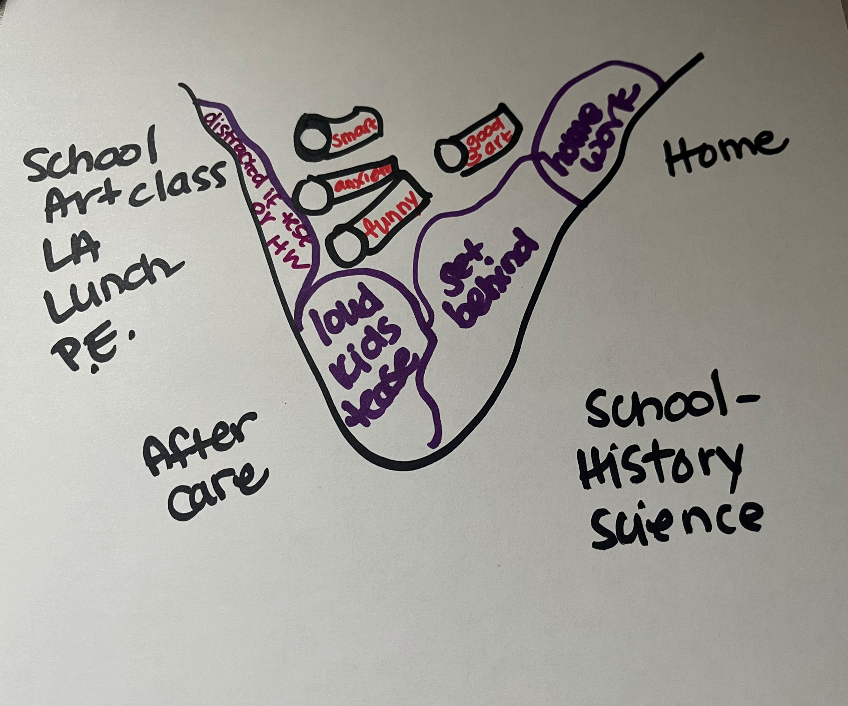
Figure 9. JoJo's Kawa model (Click here to enlarge this image).
In this visual representation, the cross-section of the river is depicted. The riverbed is represented by various colors, with participants having the freedom to choose their preferred hues. The boulders, identified by the purple shading, symbolize obstacles or challenges in the river's flow. It's intended to illustrate the interconnectedness of these elements.
The driftwood, featured separately, represents attributes that enhance or impede the flow. These attributes encompass positive and negative strengths and weaknesses, contributing to the overall dynamics of the river. The exercise encourages participants, particularly teenagers or tweens, to visualize and articulate how these components come together, fostering a deeper understanding of the factors influencing the flow of their 'river of life.'
- She describes herself as funny, good at art, smart, and anxious. Her identity is an artist, an anxious, and a bad student.
- A barrier in aftercare is the noise and other kids when she is trying to do her homework. It causes anxiety.
- She likes art, LA, and PE class and enjoys lunch with friends; BUT she is anxious about homework or tests
- Homework-probing indicated she gets distracted because of missing out or thinks about episodes at school with crying or feeling behind (embarrassed but couldn’t identify emotion).
JoJo exhibits a level of self-awareness, identifying herself as funny and talented in art, but she also acknowledges her struggle with anxiety. While she demonstrates self-awareness at a basic level, there's a notable concern regarding her identity. JoJo tends to associate herself primarily as a bad student with anxiety, creating a significant aspect of her identity.
Several barriers contribute to her challenges in aftercare, including falling behind on homework, which leads to friction with her mom. She perceives the aftercare environment as loud, and occasional peer teasing or joking impacts her negatively. Additionally, she struggles with distraction in certain classes, affecting her overall enjoyment.
JoJo identifies her strengths as being smart, good at art, and funny. However, when discussing homework, she experiences embarrassment, though she may not fully comprehend or articulate this emotion. Addressing these challenges involves delving into the underlying issues, including understanding and coping with embarrassment, to facilitate her overall well-being and academic success.
Wallace Framework (2022)
- Short-term Outcomes:
- Aggression/depression
- Social skills/peer relationships
- Academic skills
- Long-term Outcomes:
- Mental health
- Positive behavior
- Academic achievement
- School/Classroom Context
- Culture & Climate
- Healthy relationships
- Classroom management
- Prosocial norms
- P&P
- Safe & inclusive
- Effective SEL Implementation
- Skills instruction
- Opportunities for skill use
- Coordination across settings
- PD training
Figure 10 shows the Wallace framework.

Figure 10. Example of the Wallace framework.
As we delve into the challenge of shifting JoJo's identity, we have valuable insights into her skills and competencies through the SSIS assessment tool. Understanding her aspirations, such as excelling in art, attending college, and taking on leadership roles, provides a foundation for intervention. This knowledge allows us to implement skills instruction, create tailored opportunities, and coordinate efforts across different settings and individuals.
Given the importance of her academic success and personal interests, it's crucial to establish communication channels with teachers and relevant personnel. With changing classes, middle school dynamics present a challenge, but collaboration with the guidance counselor can streamline information dissemination.
Having a clear understanding of short-term and long-term outcomes allows us to craft interventions aligning with JoJo's goals. This comprehensive approach, incorporating skills instruction, targeted opportunities, coordination efforts, and teacher training, aims to facilitate positive shifts in her identity and foster growth toward her desired outcomes.
- Brief Ecology
- Focus on belief ecology with identity
- Skills & competencies with emotional identification and management/EI
- Her values are indicated with her goals and chosen occupations.
- The perspective that she can manage her emotions is significant—it should be tied to success in education and social participation.
- OT: focus on breaking tasks down for JoJo and addressing dopamine and executive functions along with SEL
To address JoJo's belief ecology within her identity, we will focus on shifting away from self-perceptions as a 'bad student' and constant identification as 'anxious.' It's essential to clarify and enhance her emotional identification and management skills, as she tends to categorize various emotions under the broad label of anxiety.
Building on her skills and competencies involves honing emotional intelligence and providing targeted emotional identification and management support. Her values, clearly outlined in her goals and chosen occupation, are a robust foundation to foster growth.
A key objective is empowering JoJo with the perspective that she can effectively manage her emotions. Linking social-emotional learning practices to her goals emphasizes that emotional regulation is integral to success. Breaking down tasks becomes a crucial strategy, particularly considering her ADHD, where small wins contribute to dopamine boosts. This approach addresses dopamine considerations and supports executive functions, making tasks more manageable and reducing the likelihood of feeling overwhelmed, procrastinating, or avoiding tasks."
- Home:
- Parents provide less positive support to girls vs. boys with ADHD (Butler Shalit-Naggar, 2008)
- Parent–adol. strain (Steinberg, 2014)
- Identity problems are more pronounced for girls with ADHD (Hinshaw et al., 2006, Rose & Rudolph, 2006)
- EBP:
- Evaldsson & Svahn, 2019
- Female adol. keenly aware/motivated to improve SEL (Steinberg, 2014)
- Social skills group with parent involvement for adolescent girls with ADHD effective for social skills, assertiveness, responsibility, and self-control (Babinski et al., 2020)
- Externalizing behavior main risk factor for girls with ADHD (Kok et al., 2016)
While there's evidence suggesting that girls with ADHD may receive less positive support at home compared to boys, it's heartening to find out through follow-up with JoJo's mom that this isn't a prevalent issue in their household, despite occasional friction over homework. It's crucial to be aware of potential parent-adolescent strain, a common occurrence with ADHD, which may be more pronounced in girls.
Research indicates that identity problems are more prominent in girls with ADHD, aligning with our observations of JoJo. Given that female adolescents with ADHD are motivated to enhance social-emotional learning, capitalizing on this awareness becomes a key intervention point. Engaging JoJo in a social skills group with parent involvement has shown effectiveness in similar cases and could be a valuable resource for her.
Interestingly, JoJo exhibits internalizing behaviors rather than externalizing ones, which contrasts with the common risk factor seen in girls with ADHD. This individual variation highlights the importance of tailoring interventions to the unique needs of each individual, even if they don't align precisely with broader research findings.
Identity Building
How are we going to do the identity building with JoJo? An example is shown in Figure 11.
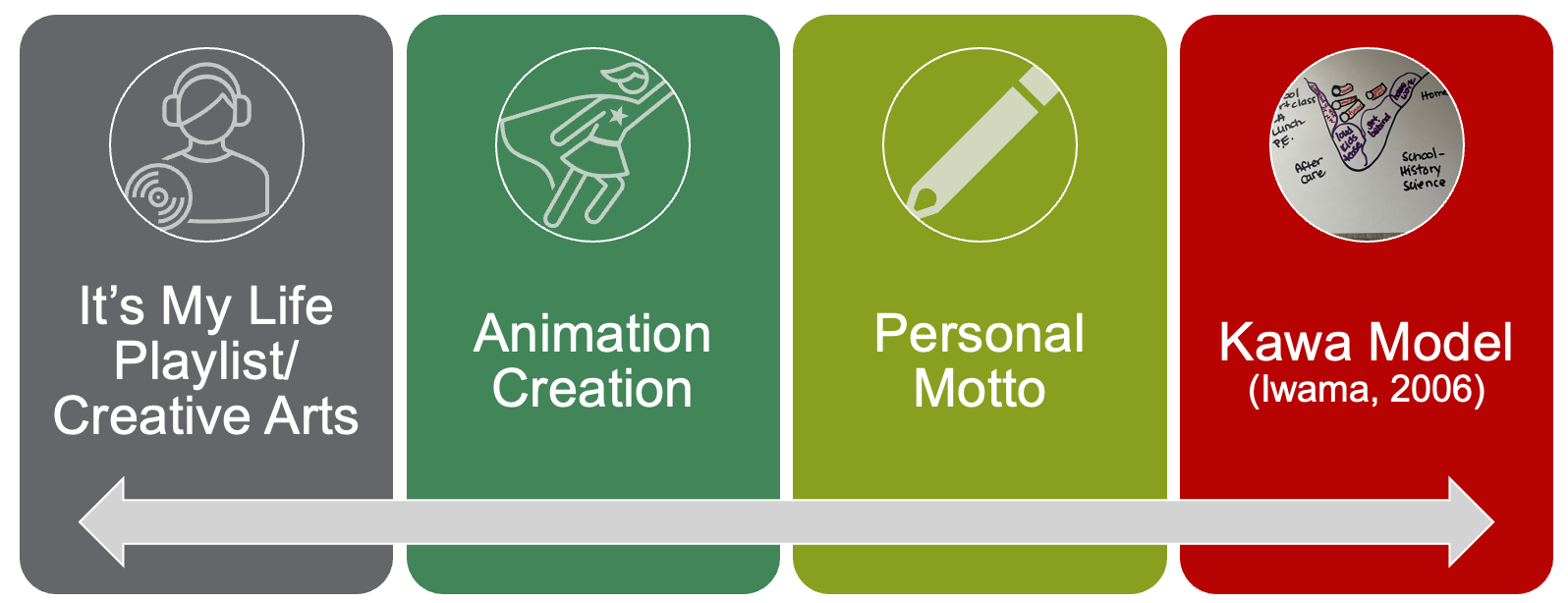
Figure 11. Example of how to build identity.
There are excellent tools available to work on building JoJo's identity. Initiatives like the 'It's My Life Playlist' can allow her to curate songs that resonate with her identity, reflecting her aspirations as an artist and a successful student. Engaging in various creative arts, such as drawing, painting, or sculpture, offers diverse avenues for identity exploration.
One creative suggestion is having her craft an animated character that represents herself—an artistic rendering of how she sees herself positively as a student. This visual representation can be a powerful tool in shaping her self-perception. Encouraging JoJo to create a personal motto adds another dimension to her identity-building process, providing a succinct expression of her values and aspirations.
Additionally, exploring tools like Canva can offer a digital platform for her to experiment with branding ideas or graphic elements that resonate with her identity. These creative endeavors serve as identity-building activities and provide tangible and personal expressions of her goals and values.
Kawa as a Therapeutic Tool
- Riverbed: Social, physical, cultural, and institutional environment (barrier or enabler)
- Rocks: Barriers to life flow
- Driftwood: Skills
- Fish: Personal qualities
(Iwama, 2006)
Figure 12 shows how to use the Kawa model as a therapeutic tool.
Figure 12. Graphic of the Kawa model (Click here to enlarge this image).
The Kawa can serve not only as an assessment tool but also as a therapeutic intervention. JoJo's depiction illustrates her challenges within the art club, providing a nuanced understanding of her experience. The scenario reveals some positive aspects, such as supportive friends, but it also highlights obstacles like mean-spirited interactions with peers, contributing to her perception of teasing.
Exploring the driftwood section helps identify her strengths and skills, crucial for building resilience. The fish section, representing personal qualities and identity, offers a unique space to foster positive self-perception. Utilizing the Kawa creates a dynamic and engaging therapeutic tool that allows for both assessment and intervention. Encouraging creativity in its execution, whether through colorful illustrations on an iPad or embellishments with glitter, adds an enjoyable dimension to the process, enhancing its therapeutic impact."
Evidence-Based SEL Model
- Monitoring of one’s own and other's emotions
- Emotional vocab,
- “Feelings check-in”
- Emotional control and reducing escalation of emotions
- Feelings thermometer
- Mental muscles
- Skills for maintaining control and regaining equilibrium
- Deep breath
- Stepping back
- Imaginary umbrella
- Developing realistic appraisals of control over life
(Wyman et al., 2010)
To effectively address JoJo's social-emotional learning needs, the focus is on monitoring one's and others' emotions. Emotional vocabulary becomes paramount, accompanied by regular feelings check-ins to foster self-awareness. Building emotional control and minimizing emotional escalation involves tools like a 'feelings thermometer' or visual analog scale.
Mindfulness practices are instrumental in strengthening mental muscles. This includes skills for maintaining control and regaining equilibrium. Incorporating deep breaths and the technique of 'stepping back,' involving self-distancing from situations, play key roles. The concept of an 'imaginary umbrella' is introduced, serving as a protective mechanism to shield against emotional challenges.
Crucially, the development of realistic appraisals of control over one's life is emphasized. This entails recognizing the effectiveness of employing these tools in managing emotions. The goal is to empower JoJo to navigate her social-emotional landscape confidently and resiliently.
Step 1: Monitoring
- Feelings Check Batteries
- Zones of Regulation
- DIY emoji scale
- Morning meeting feelings tracker
- Rose-thorn-bud
- Rose: small win
- Thorn: the challenge faced
- Bud: something looking forward to
Quint, N. (2015, 2023). POWER! Feelings Check Batteries
Evidence-based tools are essential to implement the first step of monitoring one's own and others' emotions. Options include the 'Zones of Regulation,' a DIY emoji scale, or a morning meeting feelings tracker. Personalization is encouraged, and JoJo's artistic inclination could be harnessed through the 'rose-thorn-bud' activity. In this exercise, students draw a rose to signify a small win, a thorn for a challenge faced, and a bud for something they look forward to.
These tools provide tangible methods for JoJo to check in with her emotions regularly, fostering self-awareness and emotional monitoring. Emphasizing the creative aspect aligns with her artistic strengths, making it a personalized and effective approach to the first step of social-emotional learning.
These are the feelings check batteries (Figure 13).
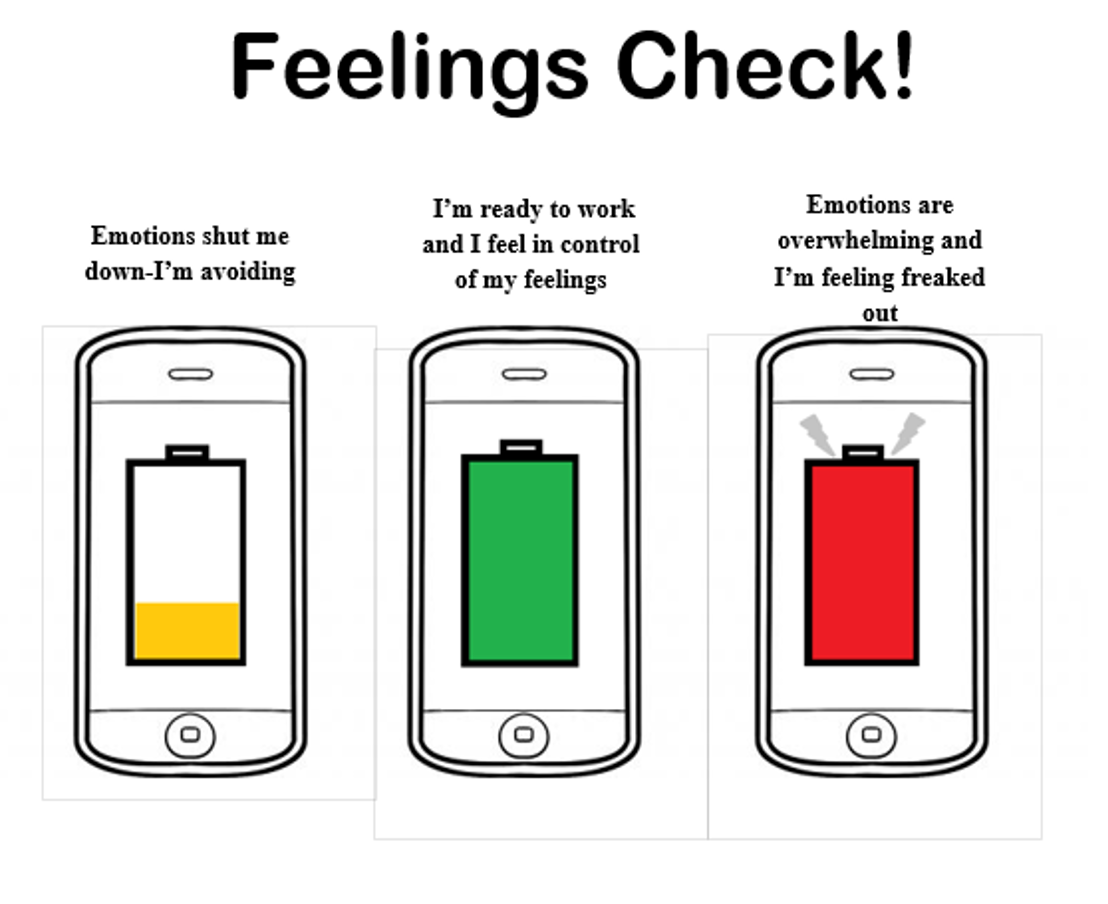
Figure 13. Example of the Feelings Check (Click here to enlarge the image).
I implemented this tool in a research study on social-emotional learning, which proved highly effective. While the iPhones may seem a bit dated, they served their purpose well with the kids. The three stages on the daily battery chart represent different emotional states. The green phase signifies feeling in control of one's emotions, the yellow represents avoidance or shutdown due to emotions, and the red indicates that emotions are overwhelming, leading to distress or panic.
This tool aimed to help children express and regulate their emotions in the research study. The daily battery chart can be customized by adding emojis or specific emotions, enabling kids to develop a nuanced emotional vocabulary. This personalized approach is instrumental in fostering emotional intelligence and self-awareness."
Figure 14 shows the daily chart (Quint, Nicole 2015, 2023).
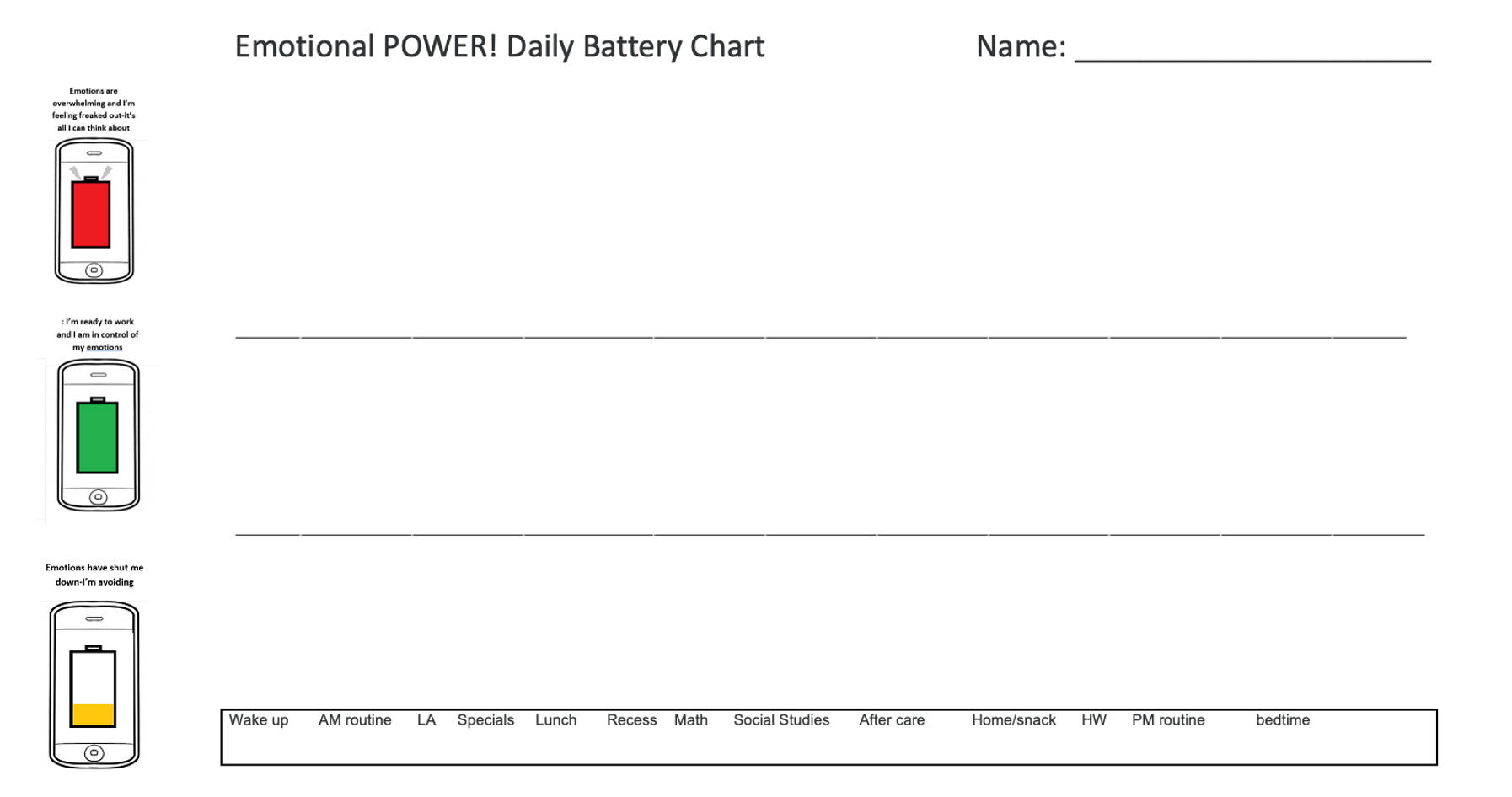
Figure 14. Daily chart (Click here to enlarge this image).
Utilizing the daily battery chart involves mapping emotions throughout the day, providing a visual timeline of emotional states. This approach is adaptable and can be tailored for various age groups. For younger children like PK, a simplified version incorporating happy, sad, and mad emotions can be equally effective.
In JoJo's case, as a tween, the chart serves as a detailed tool for assessing and monitoring emotional fluctuations. By aligning emotions with specific times, it not only aids in assessment but also assists in reinforcing memory. This visual tracking method is valuable for helping JoJo recognize and remember the specific instances where emotional challenges arise, fostering enhanced self-awareness.
The POWER! Battery Daily Chart can be seen in Figure 15.
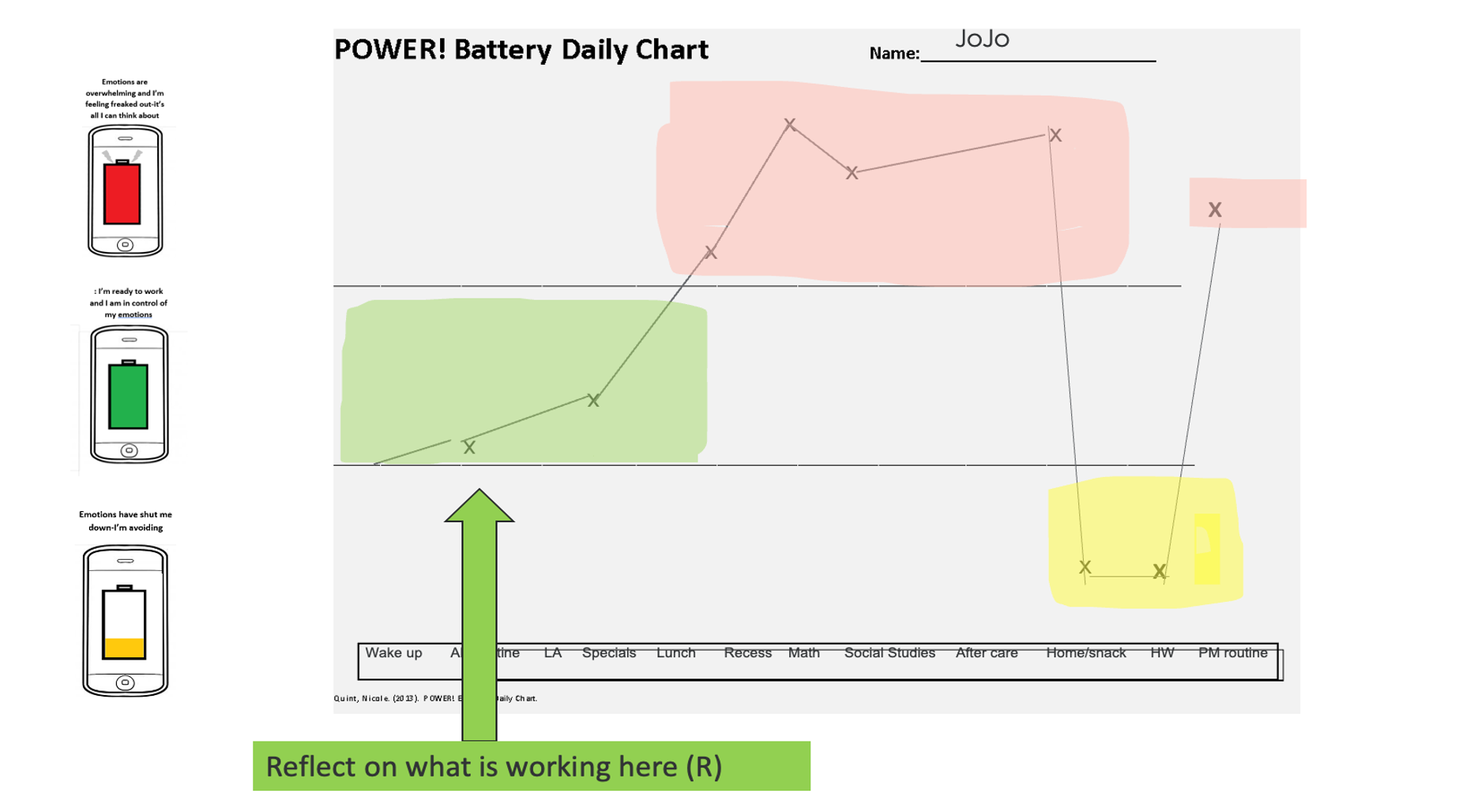
Figure 15. POWER! Battery Daily Chart (Click here to enlarge this image).
As we analyze JoJo's daily emotional pattern, a noticeable trend emerges. She starts the day in the 'green' zone, feeling in control. However, she swiftly transitions to the 'red' zone around lunchtime and remains there through aftercare. The evening brings a dip into avoidance and shutdown, with a subsequent rise in stress during bedtime, fueled by concerns about incomplete homework and anticipation of the next day.
Recognizing the positive aspects of the 'green' zone becomes pivotal. Understanding the mental state during these moments can offer valuable insights. The goal is to identify factors contributing to her positive morning experience and explore ways to extend those mentally beneficial elements into other parts of the day. This reflective approach provides an opportunity to build on existing strengths and develop strategies to enhance emotional well-being during challenging times.
Step 2: Emotional Control
- Feelings thermometer
- Bracelet version
- Thermometer
- POWER! Batteries
- Daylio Journal (4.99/month)
- Measure response to plan using a visual analog scale, batteries, Zones of Regulation, 1-10 scale
- Go FAR Program
- F (Focus & Plan)
- Focus attention on the work to be done
- Plan to solve the problem
- A (Act)
- Carry out the plan
- R (Reflect)
- Look at how the plan worked
- Success v. ineffective
- Revise plan as needed
- ! (Finish)
- Measure response
- F (Focus & Plan)
The first step in addressing JoJo's emotional challenges is identification, followed by implementing a feelings thermometer. This term encompasses tangible tools such as bracelets, homemade thermometers, or digital solutions like the Daylio Journal app. These tools enable JoJo to monitor her emotions and provide a structured way to communicate her feelings.
Options like visual analog scales, one to 10 scales, the Zones of Regulation, and the Go FAR program offer versatile approaches. The Go FAR program, focusing on Focus, Act, Reflect, and Finish, provides a systematic method. It involves creating a plan, carrying it out, reflecting on the process, and measuring the response. This structured framework equips JoJo with effective strategies to navigate and regulate her emotions in different situations."
Step 3: Maintaining Control & Equilibrium
- Breathing
- Imaginary Umbrella
- Stepping back (behaviorally and/or cognitively)
- The goal is adaptive behaviors.
- Art expression
- Journaling, gratitude
- Goal Attainment Scale
- Practice, practice, practice
- Controlled environment
- Gradually add in challenges
- Incorporate visual imagery and mindfulness
- Role-playing
- Reflection within Go FAR
In the pursuit of maintaining control and equilibrium, the focus shifts to adaptive behaviors. Essential techniques involve controlled breathing, visualization with the imaginary umbrella, and the practice of stepping back from situations. Incorporating artistic expression, journaling, and gratitude practices can contribute to maintaining emotional balance. Using a Goal Attainment Scale provides a measurable way to monitor progress.
Engaging in structured practice, initially in controlled environments, and gradually introducing stressors aids in developing procedural knowledge. Techniques such as visual imagery and mindfulness can be integrated if cognitively suitable. Role-playing is an effective tool, with the flexibility to modify scenarios as needed. Reflective practices enhance the overall effectiveness of these strategies.
Go FAR Tool
The Go FAR tool is in Figure 16.

Figure 16. The Go FAR tool (Click here to enlarge this image).
For the Focus and Plan step, incorporating the goal attainment scale and battery check provides a tangible way for JoJo to assess her emotional state. Options for areas of focus include preventing 'red,' calming down, acting rather than avoiding, and breaking down tasks.
Various strategies, such as yoga nidra for mindfulness, targeted self-talk to counter negative thoughts, and consistent reflection, contribute to effective emotional management. A crucial part of the process is revising and reflecting on the chosen strategy's effectiveness, considering the time taken, successful completion, and the overall impact on JoJo's emotional well-being.
The daily chart becomes a valuable tool for visualizing JoJo's emotional journey, with the green, yellow, and red zones providing clear indicators of her overall emotional state throughout the day.
The POWER! Battery Daily Chart using JoJo's interventions is in Figure 17.
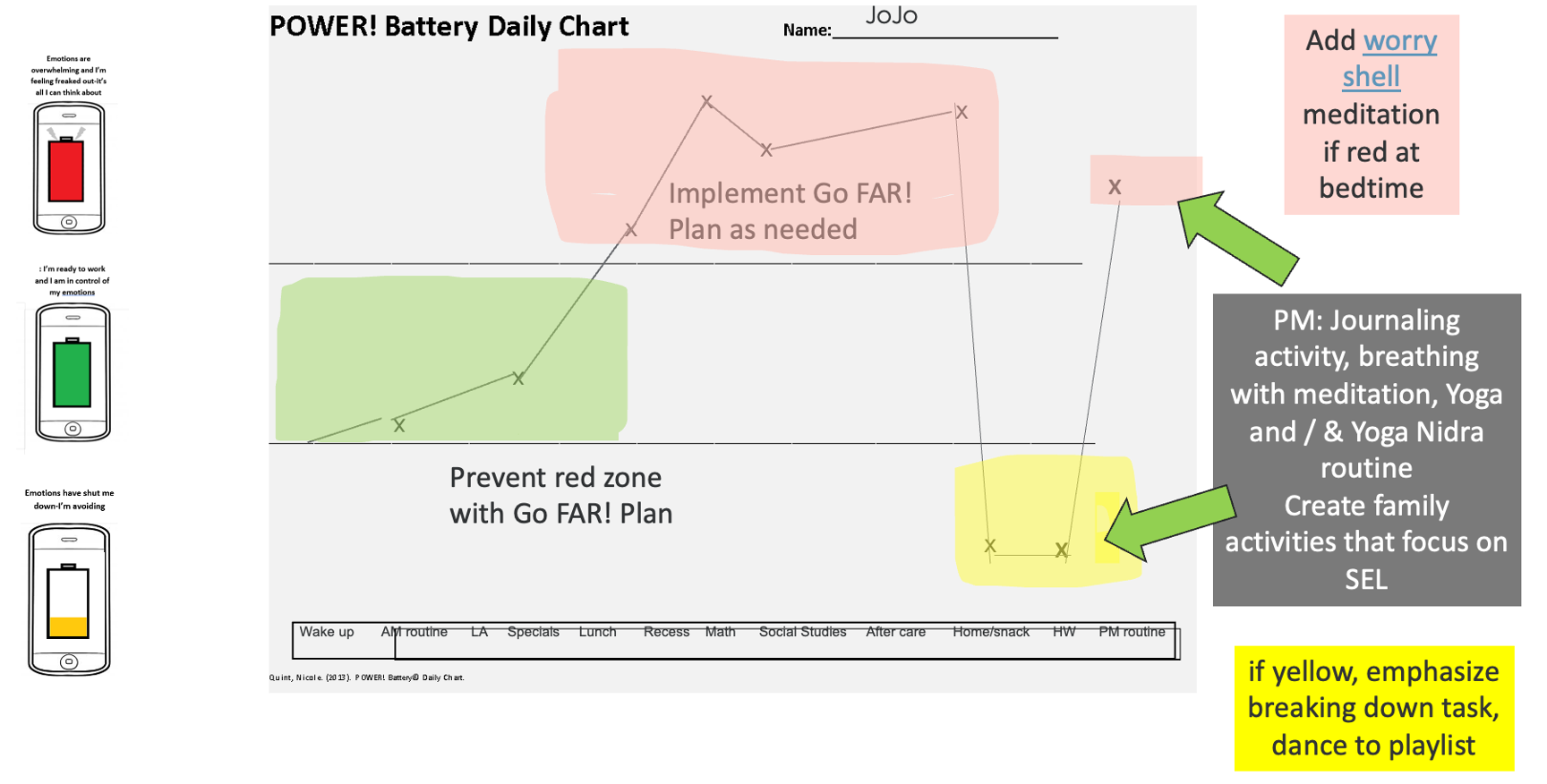
Figure 17. POWER! Battery Daily Chart (Click here to enlarge this image.)
The Go FAR plan can be implemented to harness the positive aspects of JoJo's 'green' zone, focusing on reflecting and recognizing the successful completion of goals. In the 'yellow' zone, breaking down tasks and engaging in a dance session with her playlist may help shift her from a shutdown state.
For the 'red' zone at bedtime, introducing the worry shell meditation offers a calming ritual to release anxieties. The evening routine can incorporate journaling, meditation, yoga, or yoga nidra to promote relaxation. Family activities centered on social-emotional learning, such as discussing daily emotions during dinner or encouraging problem-solving, can create an open environment for communication and support.
Figure 18 shows some of these adjustments.
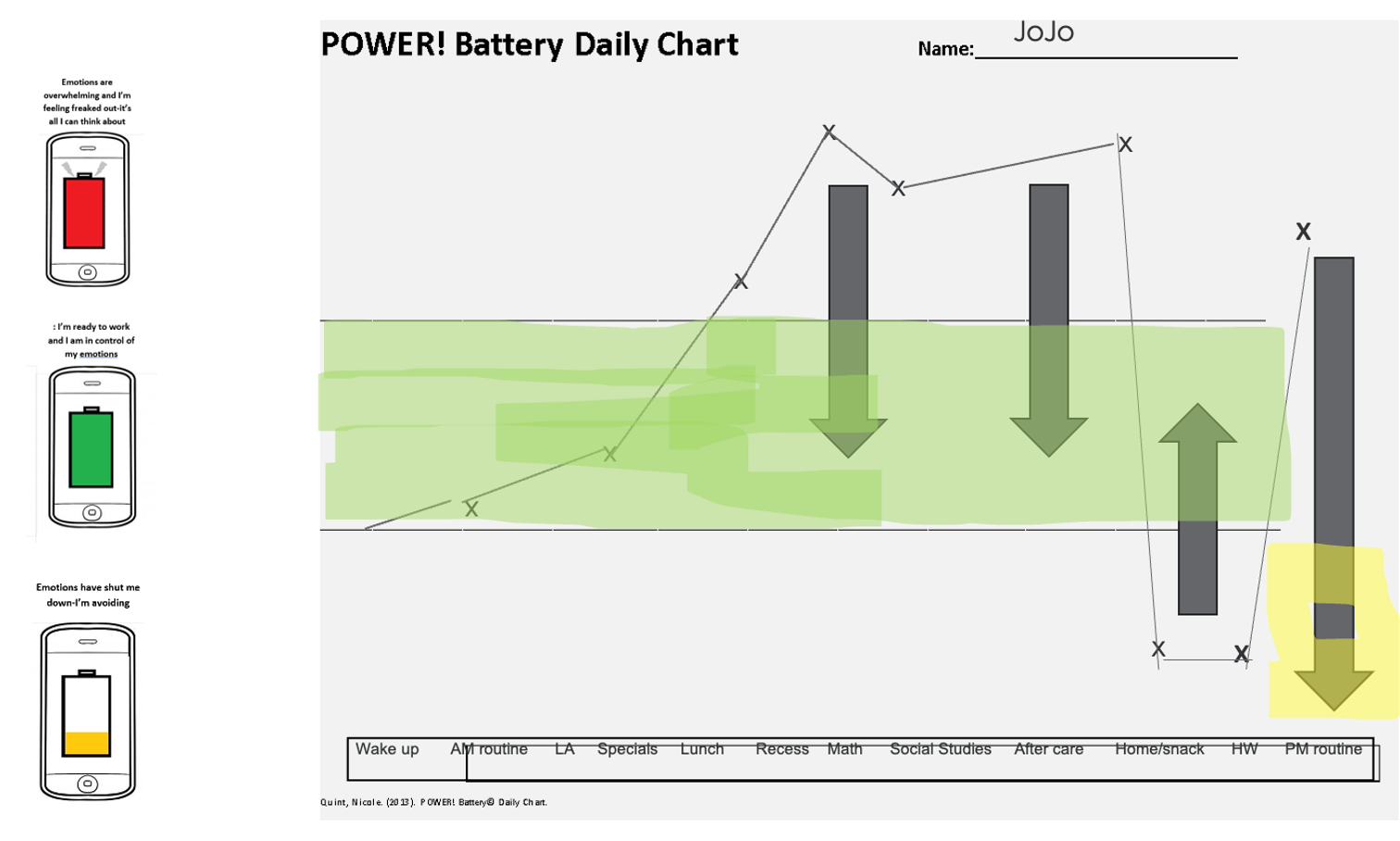
Figure 18. Adjustments for JoJo on the POWER! Battery Daily Chart (Click here to enlarge this image).
Our primary objective is to transition the 'red' zones to 'green' and elevate the 'yellow' to 'green' throughout the day. Specifically, addressing the 'red' zone at bedtime is crucial to facilitate a smoother transition to the 'yellow' zone for better sleep. The ultimate goal is not just to sustain 'green' states and equip JoJo with effective strategies to return to 'green' following moments of challenge or stress. Consistency in this cycle of regulation is our key focus."
Goals/Outcome Process
- Identify emotional state accurately
- Create (F), apply (A), or reflect (R) on strategies utilized
- Improve identification of emotion in the moment or upon reflection
- Improve ability to apply strategies, initially with support, then without
- Improve ability to analyze if strategies are effective or not and revise as needed
- Effectively monitor progress (engage in self-monitoring)
- Improve ability to create plans for different contexts
- Advance social awareness as needed
- Integrate responsible decision making
- Apply Go FAR with social awareness, relationships, responsible decision making
Considering the focus on emotional regulation, we can establish specific goals for JoJo's development. These goals could include improving her accuracy in identifying emotional states, creating and implementing a focused plan, taking effective actions, and reflecting on the outcomes using the Go FAR strategy. Progress could be measured by her ability to apply these strategies independently, analyze their effectiveness, and revise them as needed. Another goal might involve enhancing her self-monitoring skills and the capacity to create plans for different contexts. As her emotional regulation improves, we could also explore advancing into social awareness, relationships, and responsible decision-making, gradually expanding the scope of the Go FAR strategy to encompass these areas."
Self-Monitoring: GOAL Attainment Scaling
- What?
- Strategy to identify changes in academic and social behavior
- Use numerical ratings for descriptive levels
- HABITS and ROUTINES!
- How?
- Select target behavior
- Describe target behavior outcome in objective terms
- Develop 3-5 descriptions of probable outcomes from least favorable to most favorable
GAS: Options for Ratings
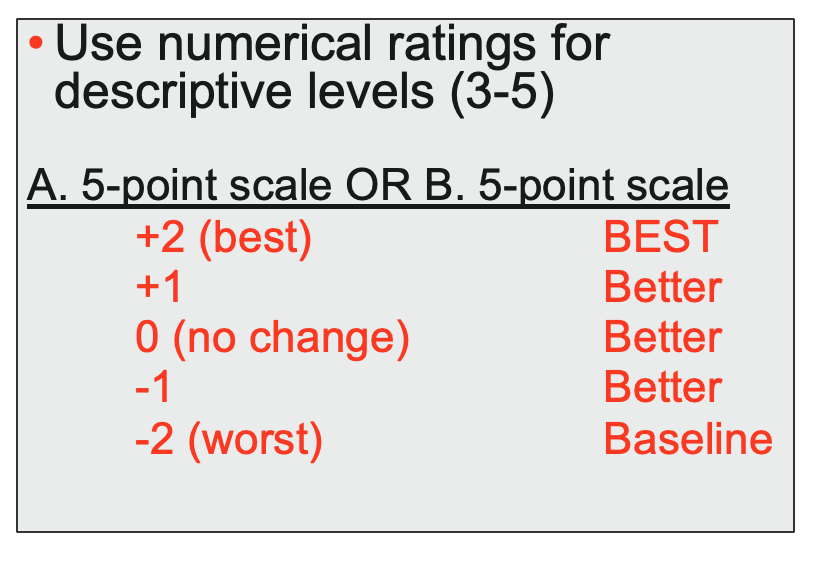
Figure 19. Ratings for GAS.
For those familiar with my other courses, I often advocate for Goal Attainment Scaling (GAS) due to its focus on habits and routines. GAS, with its numerical rating system for descriptive levels, is an excellent tool for instilling the habit of managing emotions and monitoring progress. The process involves selecting a target behavior, describing the objective outcome precisely, and defining even measurements from least favorable to most. The baseline serves as the starting point, with subsequent levels indicating improvement or worsening. Practitioners can choose the number of levels based on their preference: three, four, five, or more. The measurement process ensures a clear and quantifiable assessment of progress, contributing to the success of the intervention."
- Frequency (Never–Sometimes–Very Often–Almost Always–Always)
- Quality (Poor–Fair–Good–Excellent)·
- Development (Not Present–Emerging–Developing–Accomplished–Exceeding)
- Usage (Unused–Inappropriate Use–Appropriate Use–Exceptional Use)·
- Timeliness (Late–On Time–Early)·
- Percent complete (0%–25%–50%–75%–100%)
- Accuracy (Totally Incorrect–Partially Correct–Totally Correct)
- Effort (Not Attempted–Minimal Effort–Acceptable Effort–Outstanding Effort)
- Amount of Support Needed (Totally Dependent–-Extensive Assistance–Some Assistance–Limited Assistance–Independent)
- Engagement (None–Limited–Acceptable–Exceptional)
- OR create your own
Here are some ways to measure the different areas.
GAS Examples
GAS example number 1 can be seen in Figure 20.
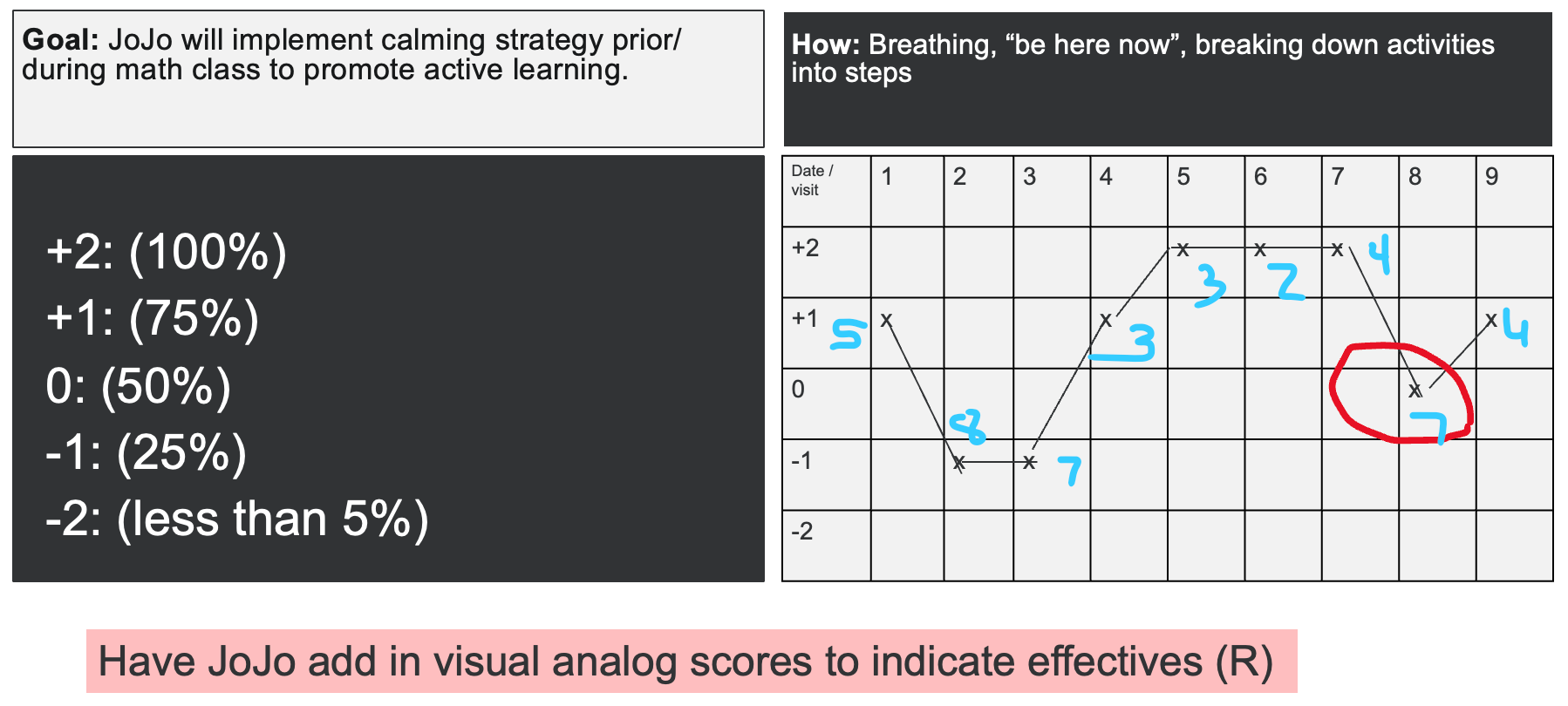
Figure 20. GAS example using numbers (Click here to enlarge the image).
JoJo is implementing a calming strategy before math class to enhance active learning. The goal is to progress from the baseline of zero to a success rate of 100%. JoJo employs various techniques, including breathing exercises, the cognitive-behavioral 'be here now' approach, and breaking down activities into manageable steps. She incorporates a visual analog scale ranging from one to ten to evaluate effectiveness.
By reviewing her measurements, we observe fluctuations in stress levels corresponding to the implementation or non-implementation of strategies. Days with successful strategy utilization result in lower stress levels, reinforcing the positive impact. It's crucial for JoJo to analyze instances where strategies weren't applied, identifying potential obstacles or reasons behind non-compliance. This reflective process helps devise targeted plans to address challenges, such as memory lapses or concerns about perception.
The long-term objective is to reduce stress consistently while achieving a high success rate in implementing the calming strategy. Adjustments in monitoring methods or strategy application may be considered based on the ongoing evaluation of JoJo's progress.
Figure 21 shows a GAS example using clock emojis.
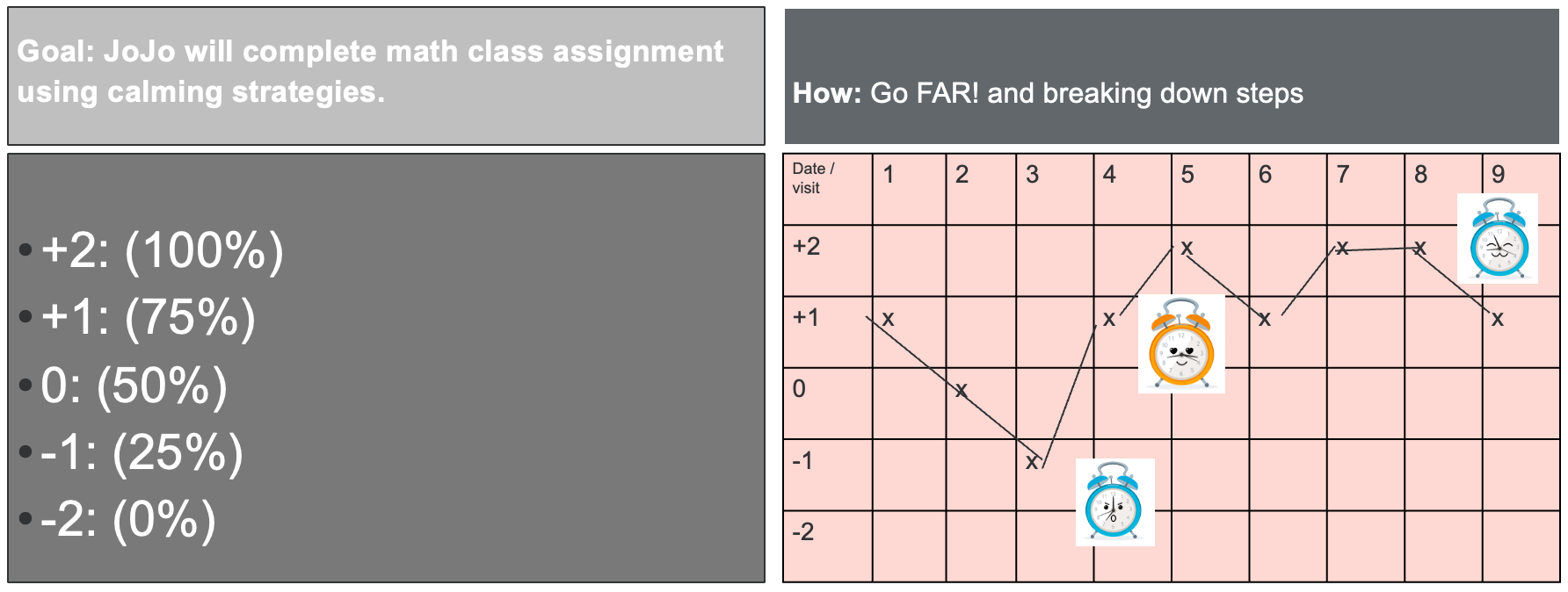
Figure 21. A GAS example using clock emojis(Click here to enlarge the image).
JoJo engages in positive self-reflection as she implements strategies to regulate her emotions. When she successfully employs the Go FAR approach and breaks down tasks, she experiences positive emotions and a sense of accomplishment. However, when strategies fall short, she recognizes the need for adjustments. This self-awareness is crucial for refining her approach and developing more effective coping mechanisms.
JoJo also sets goals for completing specific tasks, such as math class assignments or homework. For each goal, she selects a combination of strategies, including yoga nidra, breathing exercises, worry shell gratitude, and art journaling. Incorporating choices allows for a personalized and flexible approach to emotional regulation.
The ongoing monitoring of emotional states and strategy effectiveness provides valuable insights into patterns and areas for improvement. JoJo's willingness to adapt her strategies based on these reflections is a key component of her journey toward better emotional management.
Figure 22 shows the GAS using batteries.
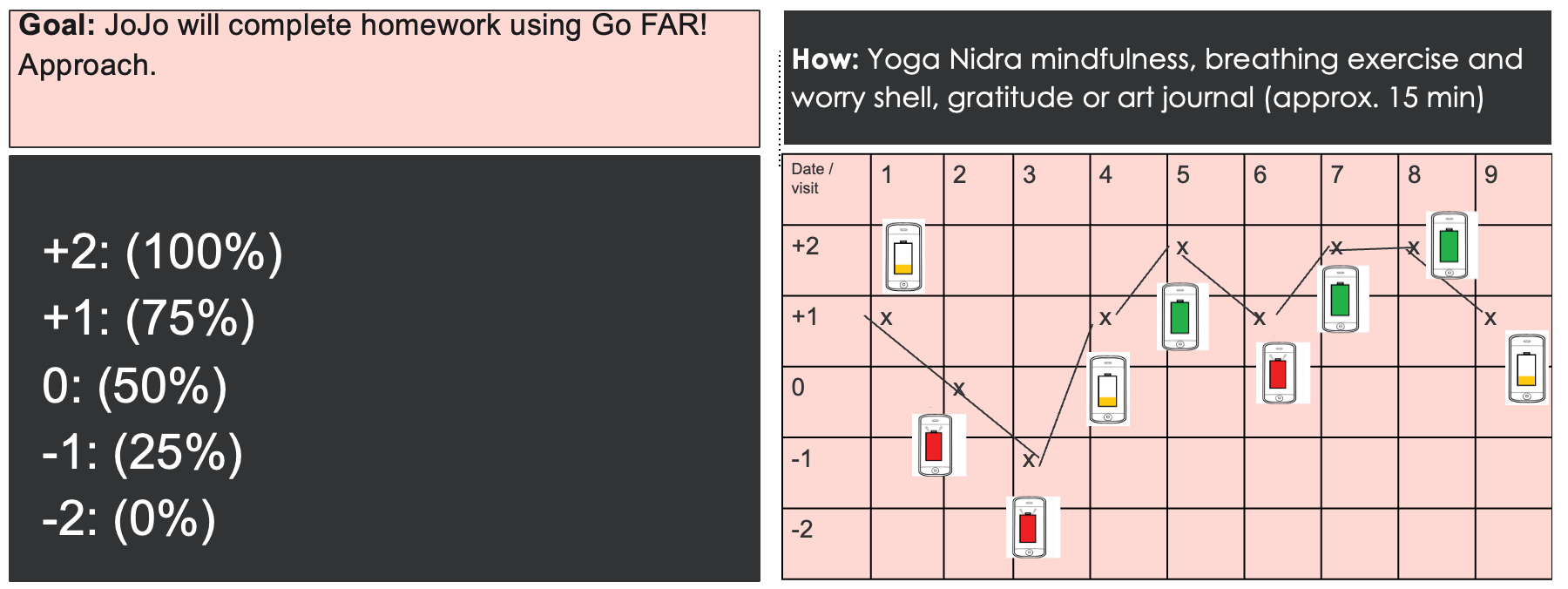
Figure 22. GAS example using batteries (Click here to enlarge the image.)
Tracking the emotional states alongside the implemented strategies is a powerful method to visualize progress and identify trends. By color-coding and using a numerical scale, JoJo can readily observe the impact of her chosen strategies on her emotional well-being. Including green days signifies successful implementation, while yellow and red days highlight areas that may require additional attention.
Furthermore, this visual representation serves as tangible evidence of JoJo's efforts and objectively measures her emotional states. It can be valuable for discussions with teachers, parents, and JoJo. Sharing this visual progress can facilitate a collaborative approach to refining strategies, reinforcing successful practices, and addressing challenges.
Summary
Thanks for joining me. Please let me know if you have any specific questions or anything else you'd like to explore in this context!
Questions and Answers
Do you have any ideas for active mindfulness? I have a client who has ADHD and anxiety, and being still long enough for a body scan, mindfulness exercise would be very hard for her.
Modification is always an option. For instance, they can wear the device and incorporate rolling or lying down while practicing. The key is adapting the mindfulness approach to their needs, allowing for movement as needed. Active mindfulness is viable, especially for individuals struggling with sitting still. I've successfully implemented active mindfulness with many kids who find it challenging to remain seated.
If I use a Goal Attainment Scale goal as the school-based approach, can I place it as a standardized assessment in the IEP?
No, it's not standardized. Standardized assessments typically adhere to specific protocols, utilize normative data, and often follow a bell curve using statistical analysis. However, the tool I mentioned is more for monitoring purposes. It doesn't conform to the structure of a standardized assessment. I did include some standardized tools in the list I provided, though.
How might you help JoJo differentiate between when she is feeling anxious and when it might be a different emotion?
There are numerous tools available, and with a child like JoJo, it can be effective to take a somewhat unconventional approach. In her case, it might be beneficial to have her identify emotions in others first, making it a more amusing and engaging process. Considering her profile, a creative arts route could work well in teasing out her emotions.
However, let's go back to the fundamental step one. Emotional vocabulary plays a crucial role, and research supports this approach. Being specific and employing various visual tools is particularly helpful for kids with ADHD, who often think in visual terms. Providing visual representations of emotions could enhance her understanding. I would suggest focusing on this aspect, encouraging her to work on identifying emotions in others initially and then gradually connecting them to her own experiences. Given her age and typical intelligence, making the process less abstract will likely be more effective.
Do you educate daycare preschool teachers on social-emotional learning?
This pertains to the professional development training outlined in the Wallace framework, particularly focusing on the red section. Providing diverse professional development sessions for educators, daycare providers, and even non-teaching staff like bus drivers can significantly impact the learning environment. If you can engage in such training, I highly recommend taking advantage of it. This aspect is crucial because it encompasses teacher background, social-emotional competence, and instructional methods—all of which collectively influence the social-emotional skills of the children they interact with. Seizing this opportunity can make a substantial difference in fostering a positive and supportive learning environment.
Using an interoception curriculum can be helpful.
I'm absolutely familiar with Kelly Mahler's program, and it's excellent. I've included some of her research in this material. Her program includes a helpful chart for rating the intensity and level of emotions, utilizing a range of vocabulary. For instance, distinguishing between 'tired' and 'exhausted.' The interoception curriculum she offers proves to be fantastic in addressing these aspects.
Can you elaborate on implementing the imaginary umbrella?
The concept of the imaginary umbrella involves a visual imagery approach. The idea is to create a metaphorical cocoon of safety, represented by an umbrella, shielding oneself from emotional and environmental influences. Similar to how an umbrella protects from the rain, this exercise helps individuals identify what environmental elements affect them emotionally.
During this exercise, participants work on constructing their own unique umbrella—considering its color, appearance, and how it serves as a protective barrier. It becomes a personal space that allows individuals to step back from the emotional impact of their surroundings and implement the strategies they are practicing.
This technique not only incorporates self-distancing strategies but also reinforces a powerful sense of protection, which has a significant impact on the brain.
I have a student who has ODD with some parental issues. There is not much out there for dealing with defiance and obstructive behavior as a secondary focus. I let parents do external rewards, but I lean towards intrinsic rewards.
I don't have all the research in front of me regarding Oppositional Defiant Disorder (ODD). Still, you're absolutely correct about the underlying defensiveness and poor self-esteem being integral to the defiance seen in ODD. Behaviorally, avoidance often stems from not knowing how to do something, finding it too challenging, or simply not wanting to comply—it's a way for individuals to exert control. While I believe ODD might be overdiagnosed, I recommend trying some self-monitoring strategies to explore potential triggers.
Engaging individuals with ODD in self-reflection and tracking their daily experiences allows them to take control and identify aspects they might want to change. It's crucial not to dictate what they should do but to empower them to make decisions about their own behavior.
Regarding the parent relationship, if one parent-child dynamic is better than the other, it's worthwhile to delve into what specifically works well and why. Coaching both parents and potentially discussing with the child why the responses differ can aid in building better relationships.
I understand that dealing with ODD can feel like navigating through quicksand, always trying to outsmart them. While reverse psychology has limits, exploring new approaches might yield positive results.
Do you have a favorite assessment that covers school-age adolescents?
I value the tools I mentioned earlier, particularly liking the Kawa approach. Engaging in discussions with older kids provides valuable insights, making it a preferred method. The SSIS is another tool I find beneficial, and my choice often depends on whether the focus is more on academic or mental health aspects. Utilizing a top-down approach, I assess the specific challenges in their occupation and tailor the choice of tool accordingly. Striking a balance between academic and mental health considerations is key for a comprehensive evaluation.
References
American Occupational Therapy Association. Occupational therapy’s role in mental health promotion, prevention, & intervention with children & youth: Social emotional learning (SEL). Retrieved from https://www.aota.org/~/media/Corporate/Files/Practice/Children/SchoolMHToolkit/Social-and-Emotional-Learning-Info-Sheet.pdf
Babinski, D. E., Mills Huffnagle, S., Bansal, P. S., Breaux, R. P., & Waschbusch, D. A. (2020). Behavioral treatment for the social-emotional difficulties of preadolescent and adolescent girls with ADHD. Evidence-based practice in child and adolescent mental health, 5(2), 173-188.
Bierman, K. L., & Sanders, M. T. (2021). Teaching explicit social-emotional skills with contextual supports for students with intensive intervention needs. Journal of Emotional and Behavioral Disorders, 29(1), 14-23.
Brightwheel. (2024). Tips for scaffolding child development with social-emotional learning. Retrieved from https://mybrightwheel.com/blog/social-emotional-learning#:~:text=Scaffolding is a teaching method,support at the right time.
Butler, R., & Shalit‐Naggar, R. (2008). Gender and patterns of concerned responsiveness in representations of the mother–daughter and mother–son relationship. Child Development, 79(4), 836-851.
Cahill, S. M., Egan, B. E., & Seber, J. (2020). Activity-and occupation-based interventions to support mental health, positive behavior, and social participation for children and youth: A systematic review. The American Journal of Occupational Therapy, 74(2), 7402180020p1-7402180020p28.
CASEL. (2024). What is the CASEL Framework? Retrieved from https://casel.org/fundamentals-of-sel/what-is-the-casel-framework/#communities
Evaldsson, A. C., & Svahn, J. (2019). Tracing unique trajectories of participation for a ‘girl with ADHD’: from ‘unwilling student to ‘agentive learner.’ Emotional and Behavioural Difficulties, 24(3), 254-272.
Goleman, D. (1998). Working with emotional intelligence. New York, NY: Bantam Books.
Goleman, D. (2001). An EI-based theory of performance. In C. Cherniss & D. Goleman (Eds.). The emotionally intelligent workplace: How to select for, measure, and improve emotional intelligence in individuals, groups, and organizations (pp. 27-44). San Francisco, CA: JosseyBass.
Hinshaw, S. P., Owens, E. B., Sami, N., & Fargeon, S. (2006). Prospective follow-up of girls with attention-deficit/hyperactivity disorder into adolescence: Evidence for continuing cross-domain impairment. Journal of consulting and clinical psychology, 74(3), 489.
Howard, K. A., & Ferrari, L. (2022). Social-emotional learning and career development in elementary settings. British Journal of Guidance & Counselling, 50(3), 371-385.
Inzlicht, M., Werner, K. M., Briskin, J. L., & Roberts, B. W. (2021). Integrating models of self-regulation. Annual Review of Psychology, 72, 319-345.
Iwama, M. K. (2006). The Kawa model: Culturally relevant occupational therapy. Elsevier Health Sciences.
Katz, E., & Girolametto, L. (2013). Peer-mediated intervention for preschoolers with ASD implemented in early childhood education settings. Topics in Early Childhood Special Education, 33(3), 133-143.
Kilgus, S., & Eklund, K. (2022). Resilience education program: A Tier 2 intervention for internalizing concerns, cognitive-behavioral instruction curriculum grades 6-8. Wisconsin Center for Education Research at the School of Education, University of Wisconsin-Madison. Retrieved from https://uwmadison.app.box.com/s/ogqr7xt5s722kxhsofq9qfomhcmkoe73
Kok, F. M., Groen, Y., Fuermaier, A. B., & Tucha, O. (2016). Problematic peer functioning in girls with ADHD: A systematic literature review. PloS one, 11(11), e0165119.
Kuypers, L. (2023). Zones of Regulation. https://zonesofregulation.com/
LaBelle, B. (2023). Positive outcomes of a social-emotional learning program to promote student resiliency and address mental health. Contemporary School Psychology, 27(1), 1-7.
MacCann, C., Jiang, Y., Brown, L. E., Double, K. S., Bucich, M., & Minbashian, A. (2020). Emotional intelligence predicts academic performance: A meta-analysis. Psychological bulletin, 146(2), 150.
Mahler, K., Hample, K., Jones, C., Sensenig, J., Thomasco, P., & Hilton, C. (2022). Impact of an interoception-based program on emotion regulation in autistic children. Occupational therapy international, 2022.
Odom, S. L. (2019). Peer-based interventions for children and youth with autism spectrum disorder: History and effects. School Psychology Review, 48(2), 170-176.
Park, M. H. (2016). Emotional scaffolding as a strategy to support children’s engagement in instruction. Universal Journal of Educational Research, 4(10), 2353-2358.
Park, M. H., Tiwari, A., & Neumann, J. W. (2020). Emotional scaffolding in early childhood education. Educational Studies, 46(5), 570-589.
Robson, D. A., Allen, M. S., & Howard, S. J. (2020). Self-regulation in childhood as a predictor of future outcomes: A meta-analytic review. Psychological bulletin, 146(4), 324.
Rose, A. J., & Rudolph, K. D. (2006). A review of sex differences in peer relationship processes: potential trade-offs for the emotional and behavioral development of girls and boys. Psychological bulletin, 132(1), 98.
Slovák, P., Rowan, K., Frauenberger, C., Gilad-Bachrach, R., Doces, M., Smith, B., ... & Fitzpatrick, G. (2016, February). Scaffolding the scaffolding: Supporting children's social-emotional learning at home. In Proceedings of the 19th ACM conference on computer-supported cooperative work & social computing (pp. 1751-1765).
Steinberg, L. D. (2014). Age of opportunity: Lessons from the new science of adolescence. Houghton Mifflin Harcourt.
van Rhijn, T., Osborne, C., Ranby, S., Maich, K., Hall, C., Rzepecki, L., & Hemmerich, A. (2021). Peer play in inclusive child care settings: Assessing the impact of Stay, Play, & Talk, a peer-mediated social skills program. Child care in Practice, 27(3), 224-238.
Wallace Foundation. (2022). Navigating SEL from the inside out: Middle & high school focus. Retrieved from https://wallacefoundation.org/sites/default/files/2023-09/navigating-social-and-emotional-learning-from-the-inside-out-middle-high-school.pdf
Wyman, P. A., Cross, W., Hendricks Brown, C., Yu, Q., Tu, X., & Eberly, S. (2010). Intervention to strengthen emotional self-regulation in children with emerging mental health problems: Proximal impact on school behavior. Journal of abnormal child psychology, 38, 707-720.
Citation
Quint, N. (2024). Social emotional learning: An occupation-centered approach to self-regulation. OccupationalTherapy.com, Article 5691. Available at www.occupationaltherapy.com

